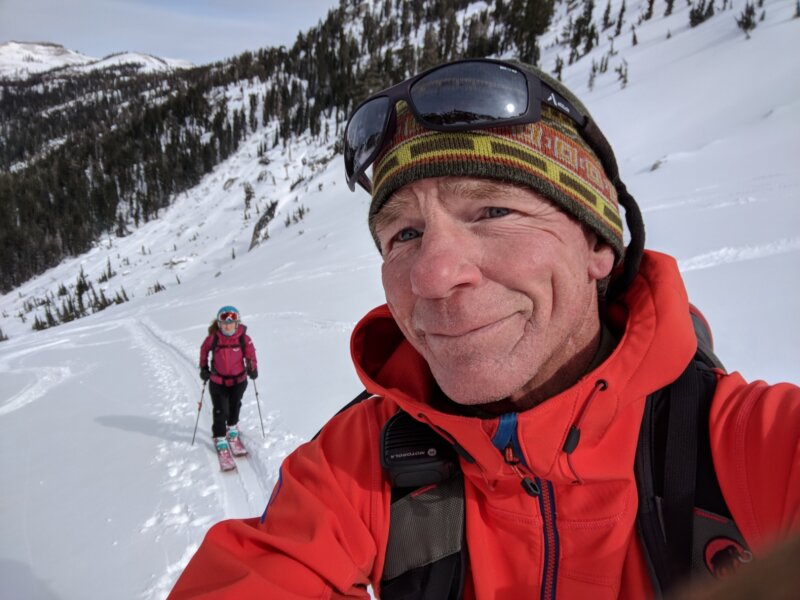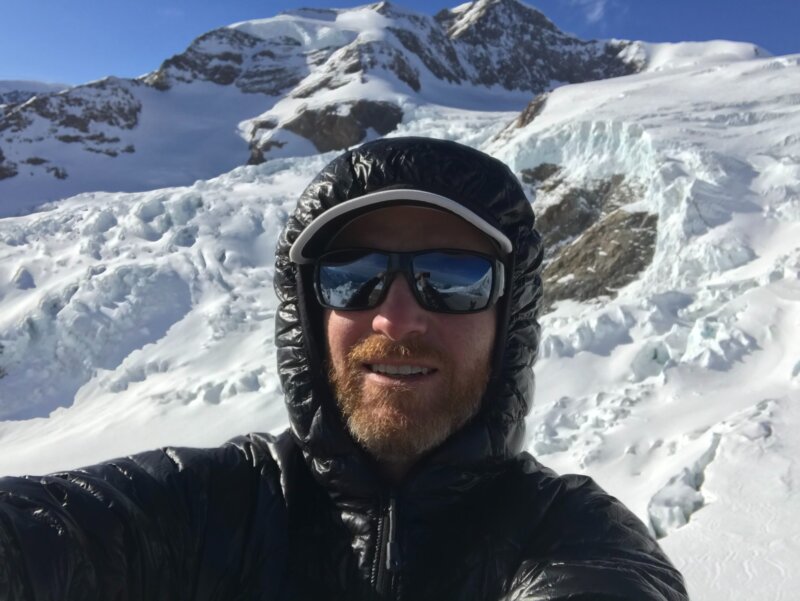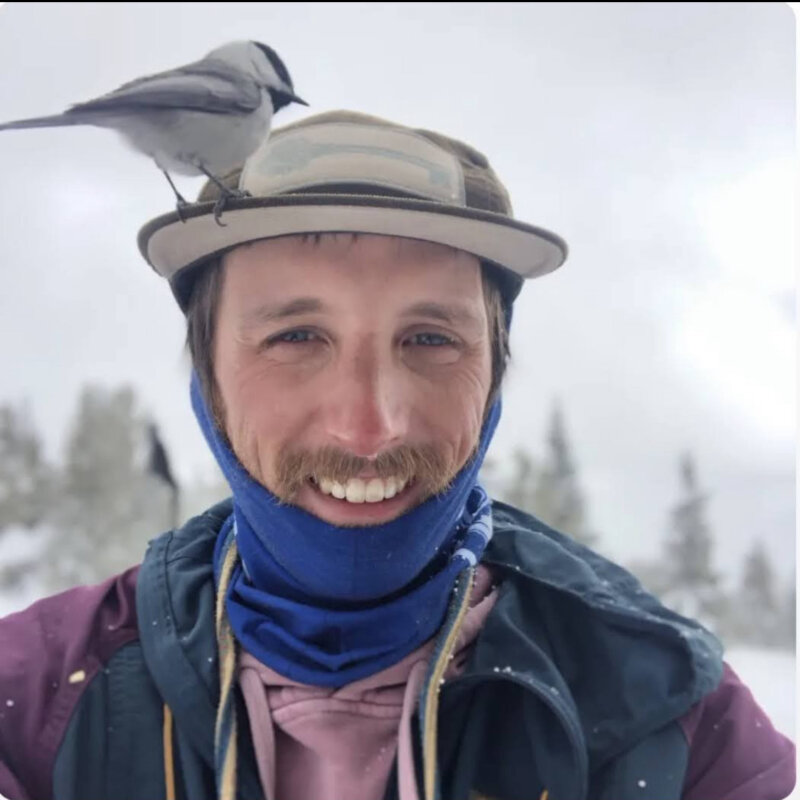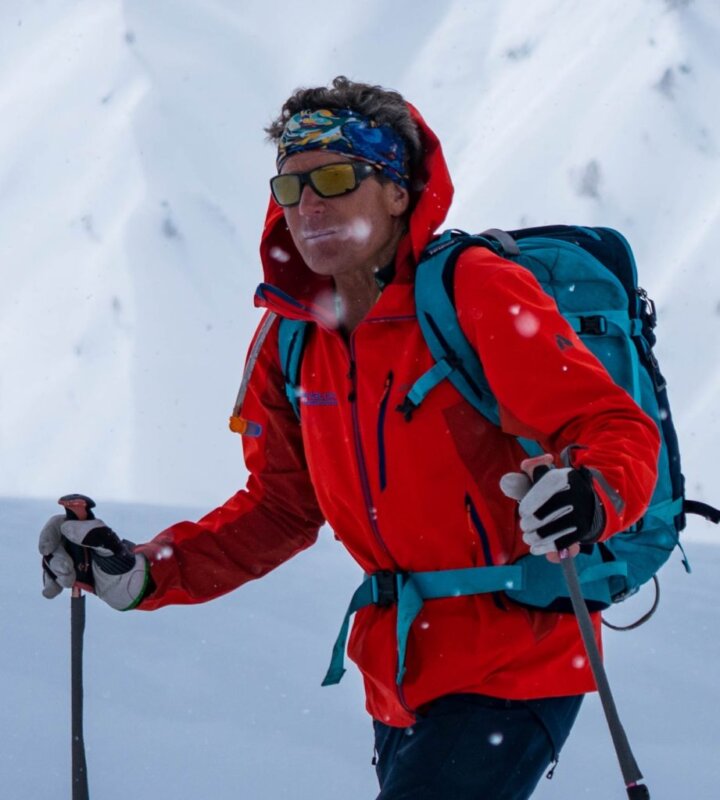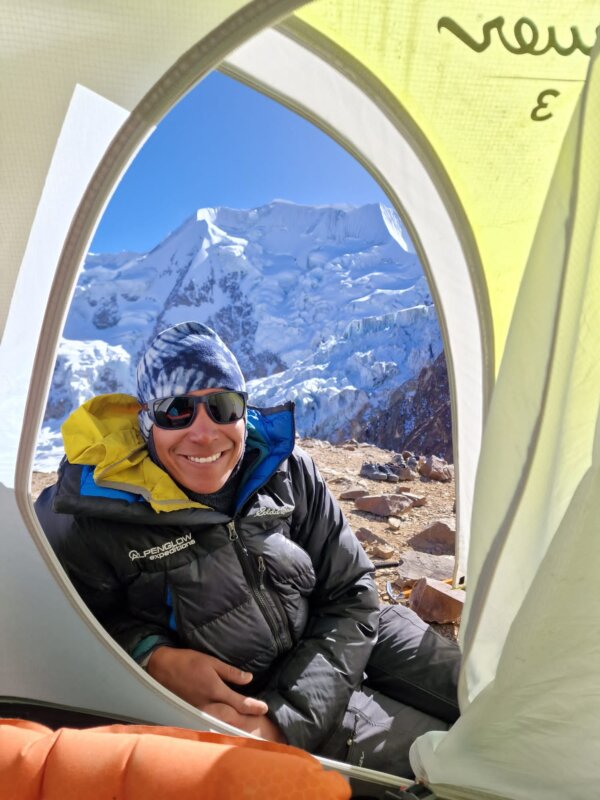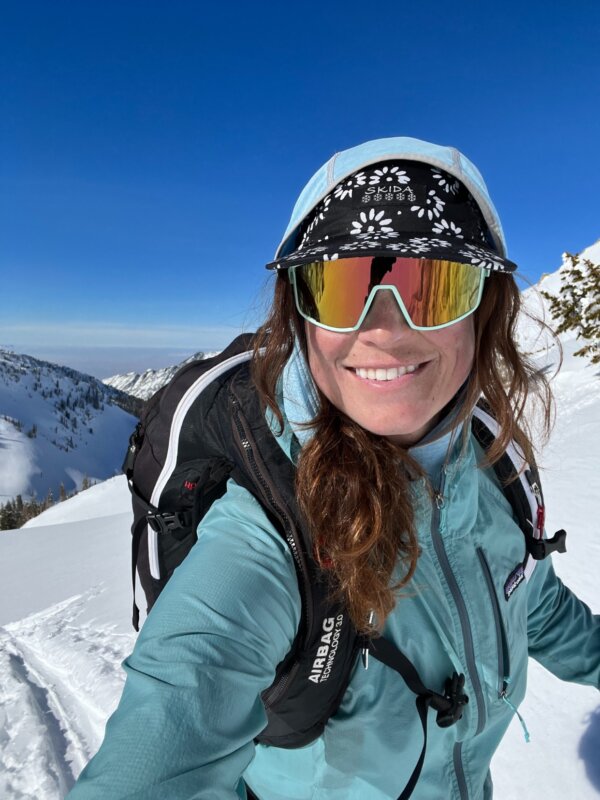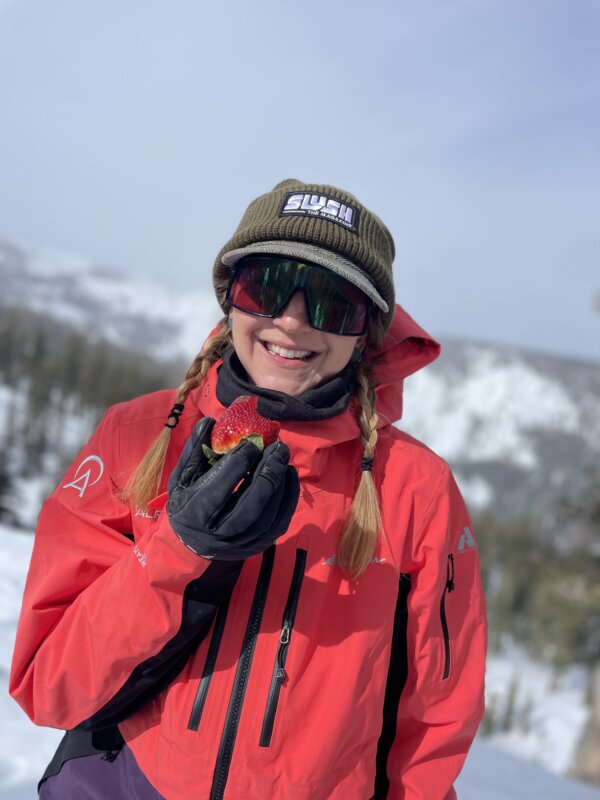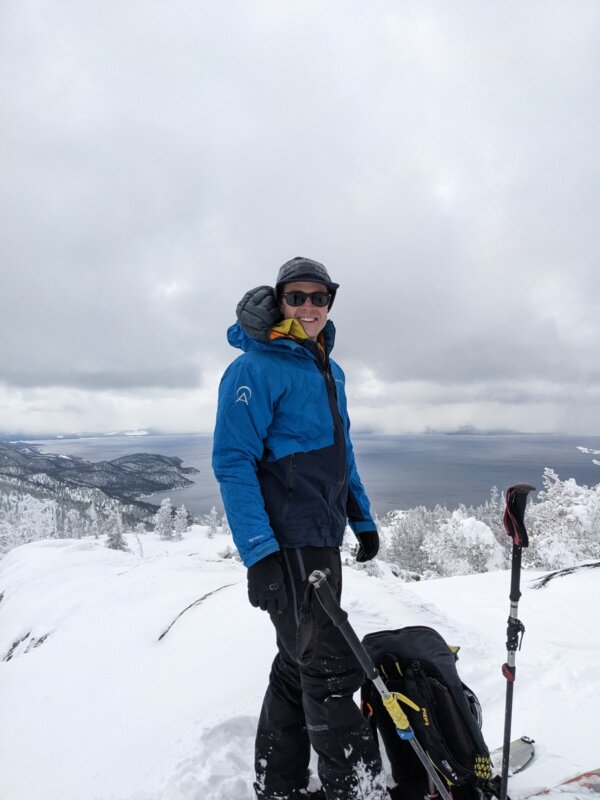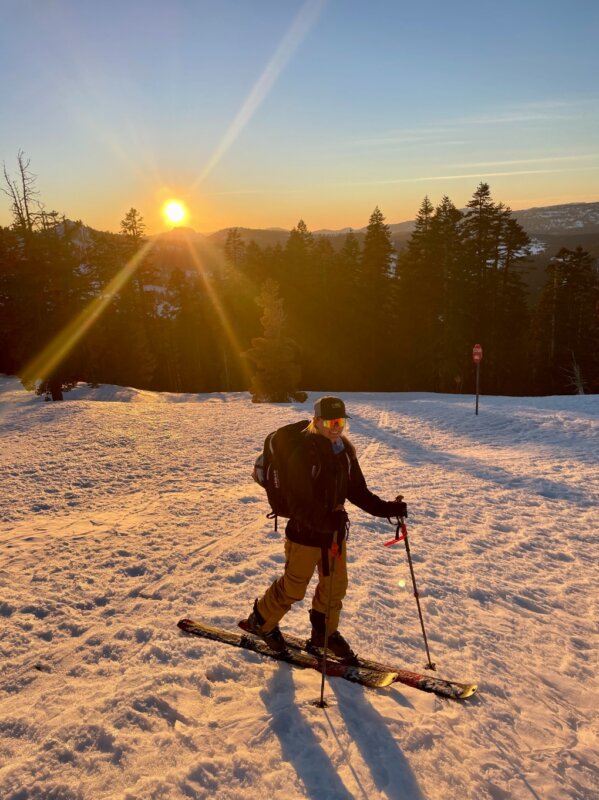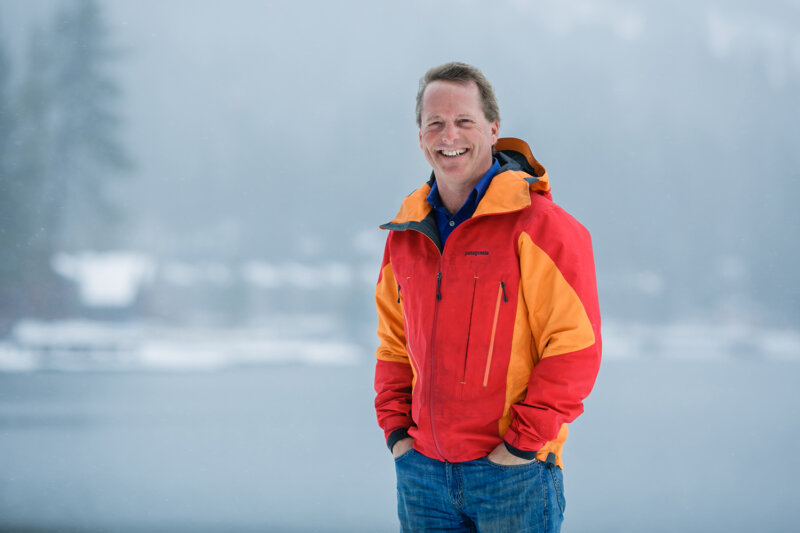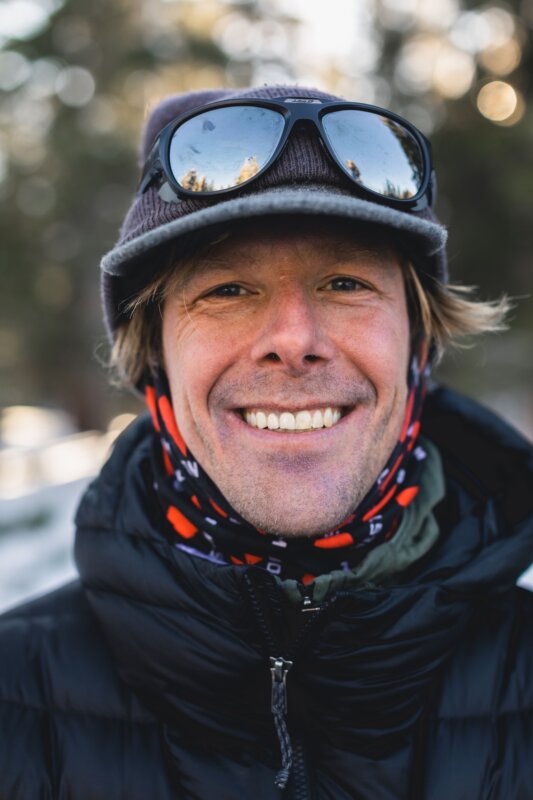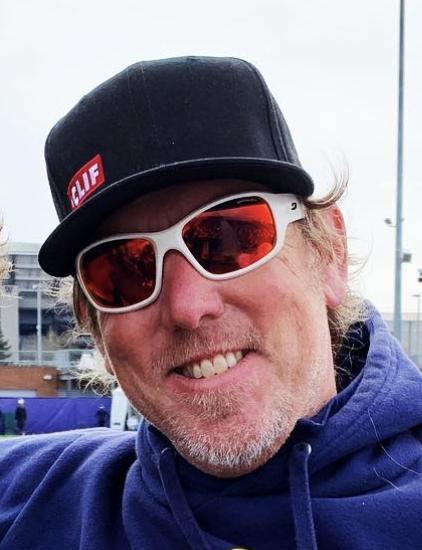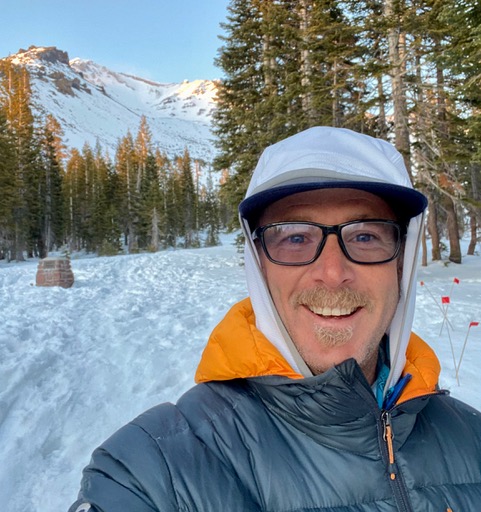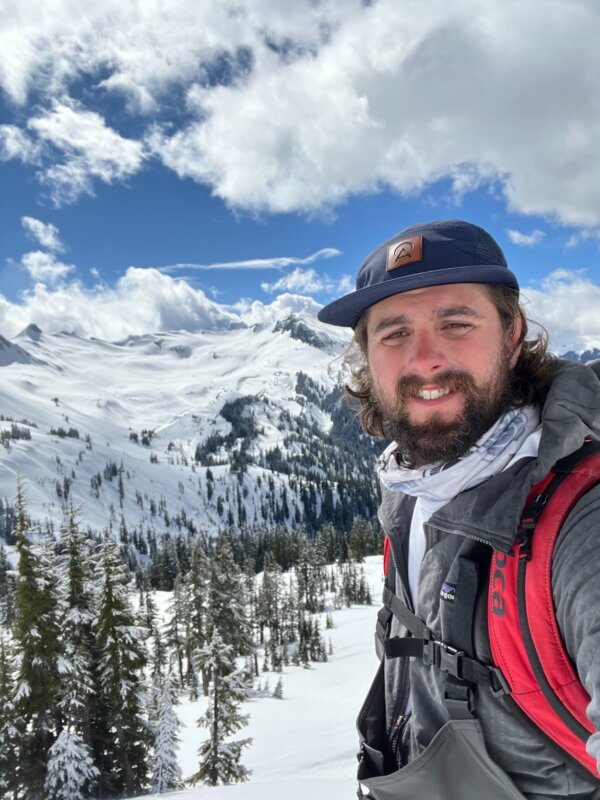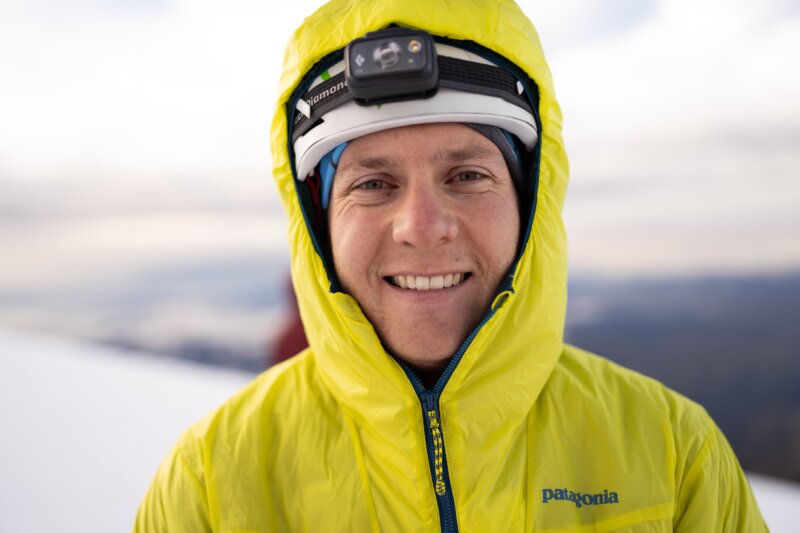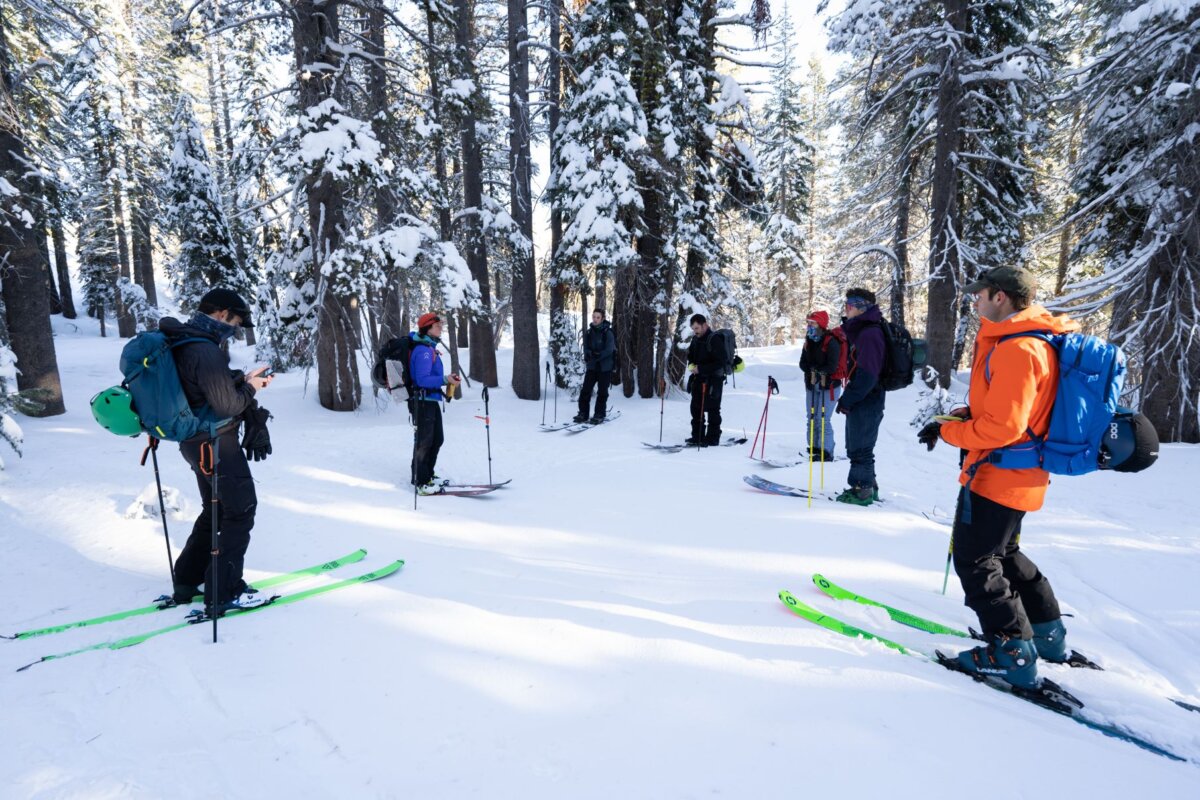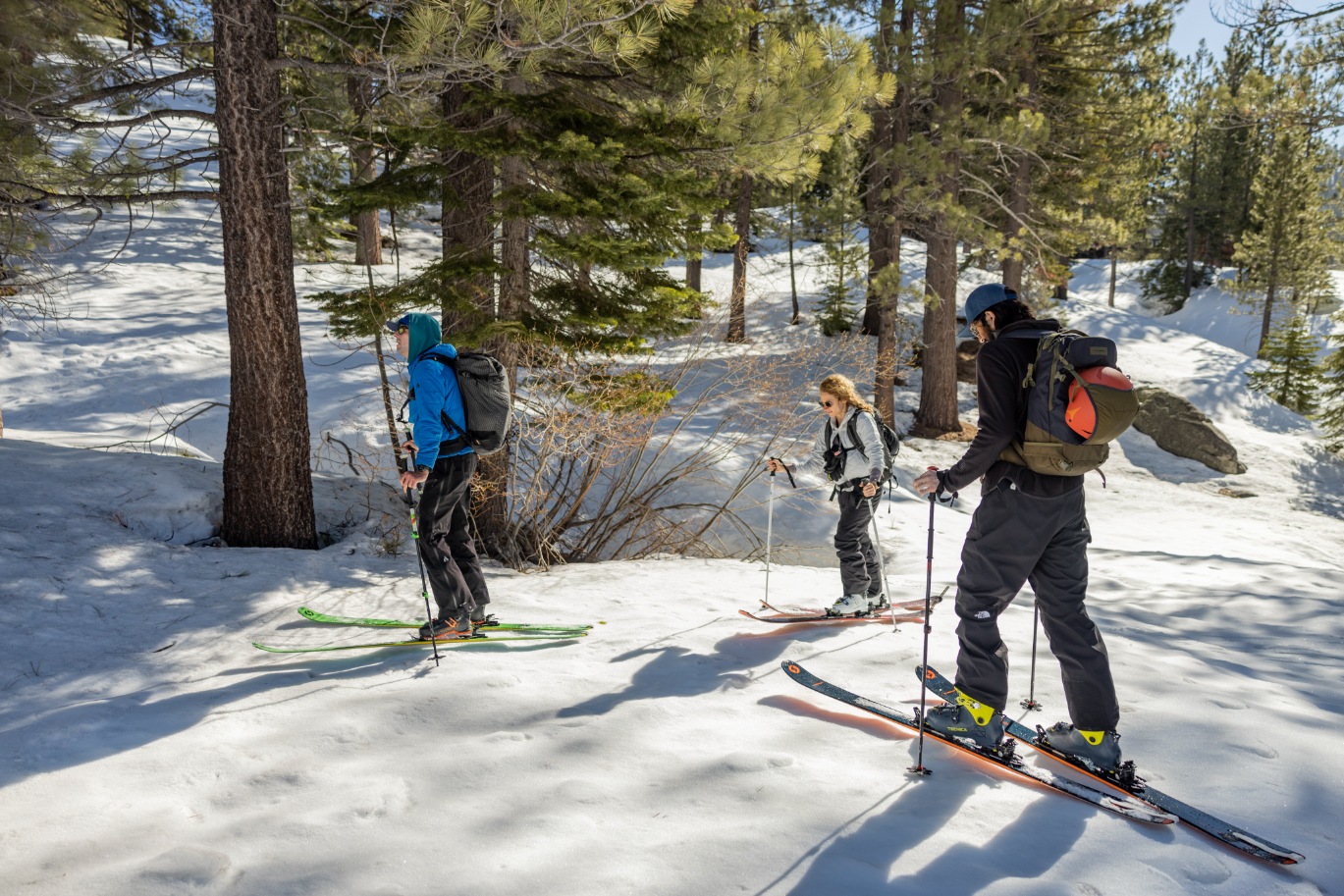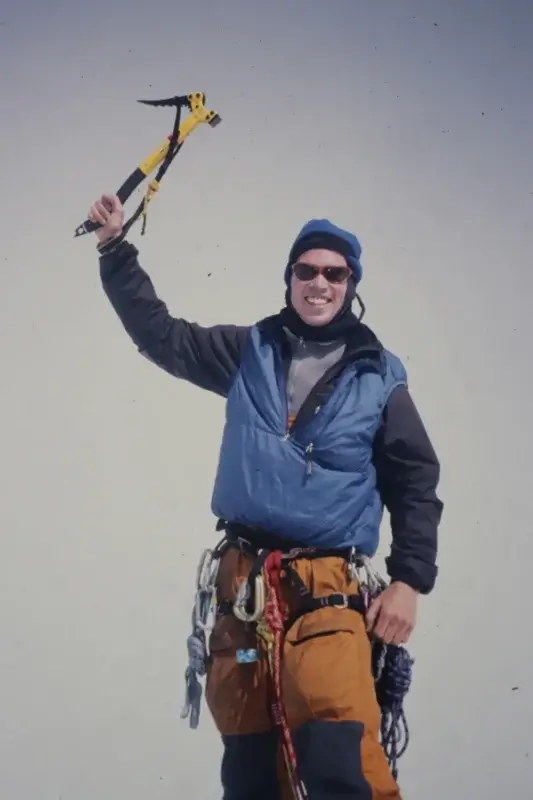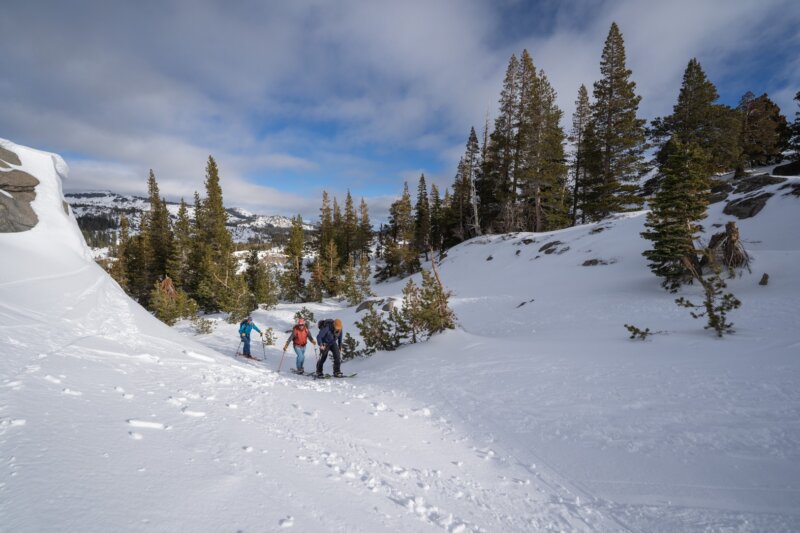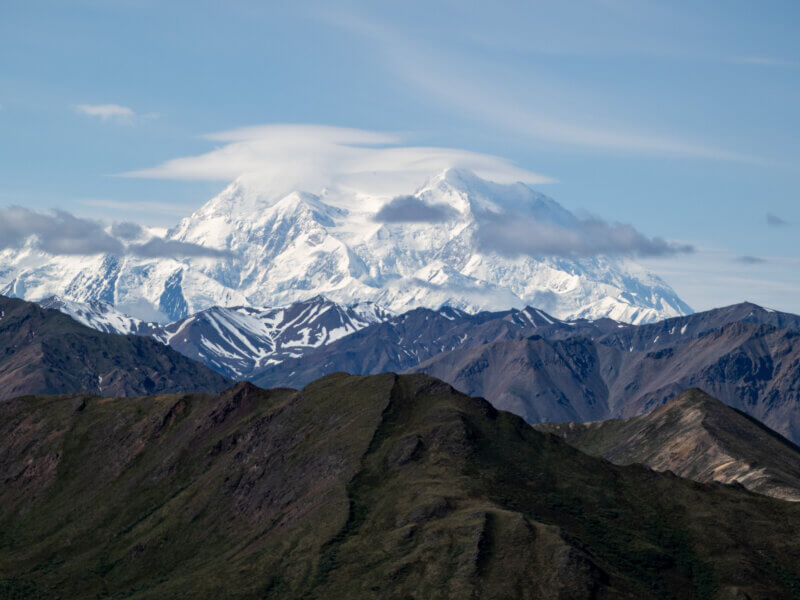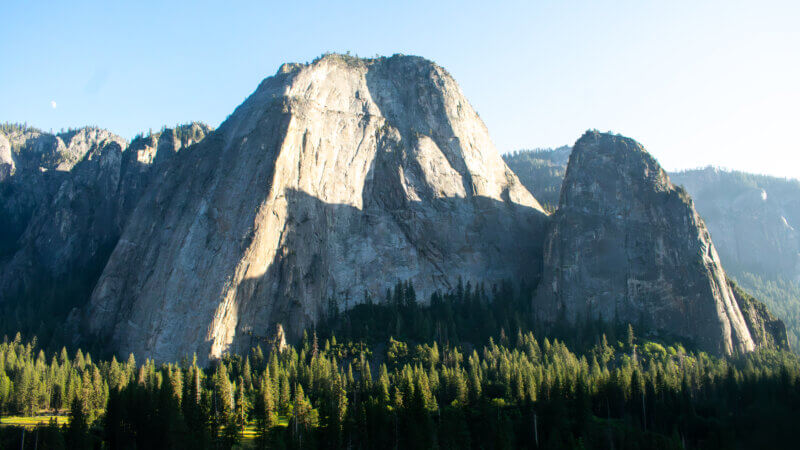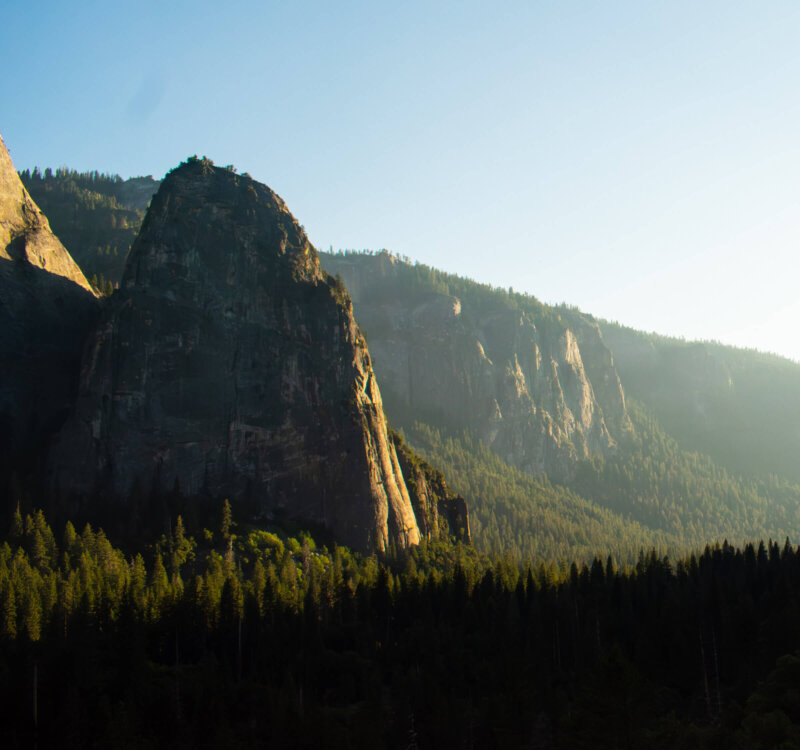Glacier Travel & Crevasse Rescue Course
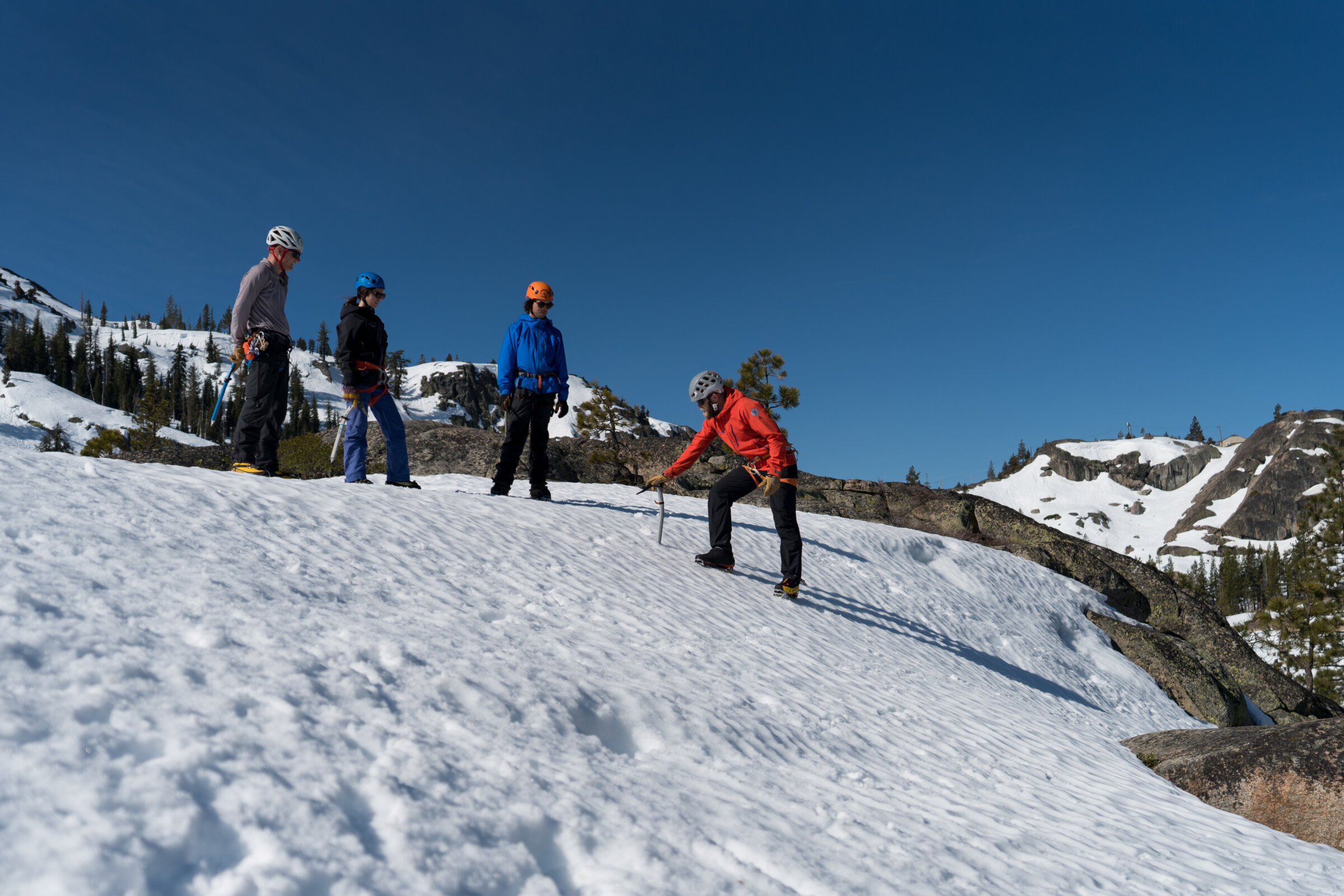
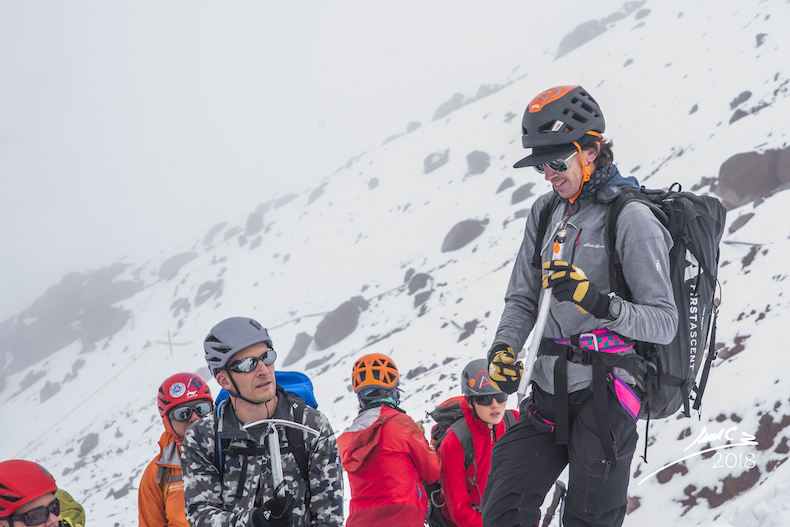
Glacier Travel & Crevasse Rescue Course
- 3/1/26
- 3/8/26
- 3/15/26
- 3/22/26
- 3/29/26
- 4/5/26
- 4/12/26
- 4/19/26
- 4/26/26
- 5/3/26
- 5/10/26
- 5/17/26
- 5/24/26
- 5/31/26
Learn from the Best Tahoe Mountain Guides
Questions? Inquire Here.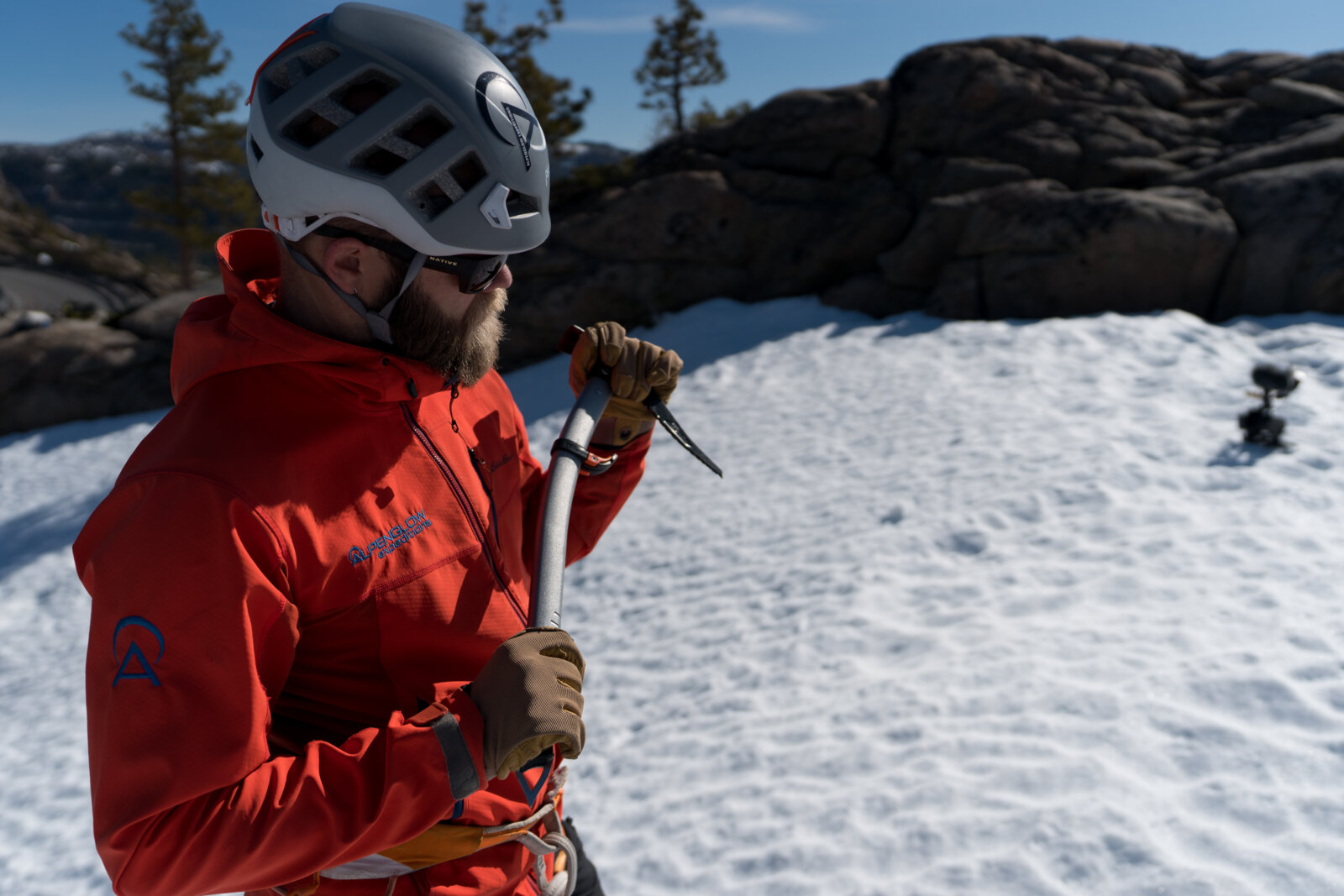
Traveling on glacial terrain can be inherently dangerous, difficult and complicated. Our AMGA-certified Tahoe mountain guides will teach you everything you need to know.
Preventing a fall, or limiting the potential severity of a fall, into a crevasse while moving efficiently is the goal of glacier travel and requires practice and attention to detail. If a fall does occur, rapid, organized, and safe rescue is the goal of crevasse rescue.
GOALS OF THE GLACIER TRAVEL & CREVASSE RESCUE COURSE:
– Introduce basic concepts of glacier travel and crevasse rescue.
– Become familiar with equipment choices, use and inspection.
– Practice roped travel, self-rescue and partner rescue.
– Choosing how to travel on glaciated terrain is usually the first and often most difficult decision to make.
There are two basic ways to address glacier travel safety and they usually depend on the activity and/or the perceived level of hazard:
– Having the team roped up in advance and pre-equipped for self and team rescue. This is the more traditional mountaineering glacier travel approach.
– Traveling unroped and having rescue equipment available for team rescue. This is most common for heli ski and ski mountaineering descents.
Choosing how to rescue is the next difficult decision to make, and requires a specific skillset and significant practice. Our Tahoe guides will dive into each of these approaches and learn about the intricacies of both travel and rescue in each situation. Basic skills covered throughout the day include:
– Introduction to the glaciated environment
– Anatomy of a glacier
– Hazard recognition
– Overview of equipment
– Basic ropework
– Knots and hitches
– Tie-in methods and spacing
– Team size and how that affects security
– Moving as a team
– Strategies to increase security
– Crevasse rescue
– Overview of incident response to a crevasse fall
– Snow anchors and load transfers
– Lowering systems
– Raising systems
– Rope ascending and descending
Don’t have all the necessary gear? For this course we provide technical gear free of charge on a first come first serve basis. This includes harness, helmet, mountaineering axe, and more. Email the office with your gear needs: info@alpenglowexpeditions.com
WHO IS THIS GLACIER TRAVEL & CREVASSE RESCUE COURSE FOR:
This intermediate mountaineering course is suitable for both skiers/riders and climbers, as the fundamental skills are shared. Students are required to have mountaineering experience. You must have experience using an ice axe and crampons. If you do not have mountaineering experience, please take an Intro to Mountaineering course with us or equivalent before taking this course.
Participants 16 years and over are able to join without accompaniment. If you would like to take this course with children 12-15 years of age, please contact our office to arrange a private course.
THE ALPENGLOW DIFFERENCE
With countless expeditions to high-altitude peaks around the world over the last 15 years, we bring a wealth of experience and knowledge to our beloved “home mountain”. Our teaching and guiding philosophy has been honed from the flanks of the Himalayan giants to the technical peaks of Peru, and we are beyond excited to be able to bring our program to this fantastic mountain. In addition to our international expedition roots, we are accredited by the American Mountain Guides Association (AMGA), being one of the very few guide services in the region to hold such a high standard. Each of our guides is trained by the AMGA in the terrain in which they operate, and the program is supervised by internationally licensed IFMGA mountain guides. This high standard, along with our many years of experience, translates to a fantastic mountain adventure!
Technical
Fitness
- 8-9AM
- Intro to Glacier Travel
To start things off, our Tahoe guides will begin the day learning about glaciers – their anatomy, typical hazards, and the equipment needed to safely travel on them.
- 9-3:30PM
- Field Session
Moving to the field, we’ll learn things such as rope-up procedures, anchoring, rope ascending and descending, lowering and raising systems. We’ll finish off with a full crevasse rescue scenario.
- 3:30-4PM
- Debrief
We’ll review the day and go over next steps.
Our Tahoe Mountain Guides.
Glacier Travel & Crevasse Rescue Questions
Yes, you should bring a sack lunch and water bottle for this course.
Yes! A large portion of our business is designed around custom adventures. Booking a private day gives you the freedom to tailor the day around your goals, pace, and group size.
Please click here to review our domestic cancellation policy
We strongly recommend that you purchase trip insurance to protect your activity purchase against unforeseeable circumstances. We recommend Spot as a provider of trip insurance. Spot is a 3rd party provider and is not affiliated with Alpenglow Expeditions – please refer to the Spot website or contact Spot directly for all terms and conditions.
Glacier travel and crevasse rescue equipment list
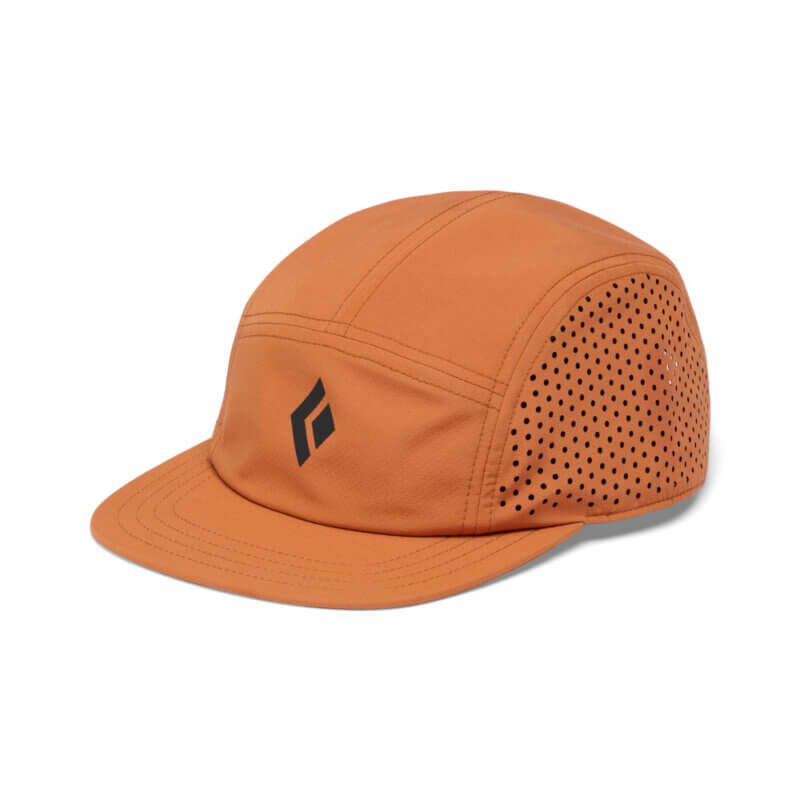 Hat
HatBring your favorite baseball hat for shelter from the sun. No white under the brim – the reflection off of it from the sun is blinding.
Recommended: Black Diamond 5-Panel Synthetic Cap
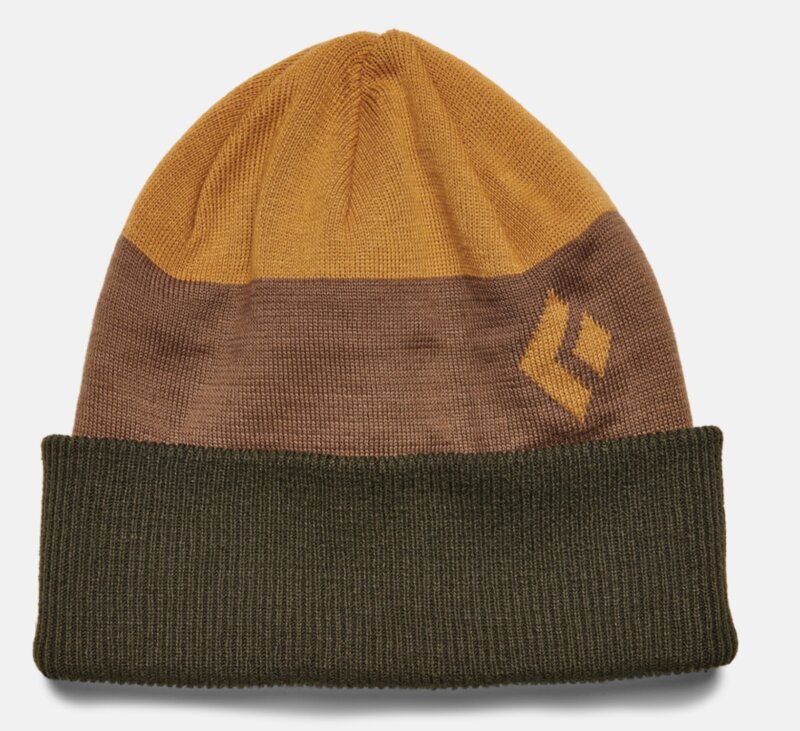 Beanie
BeanieA comfortable, warm well-fitting hat that covers your ears. Make sure that one of your hats fits under a helmet.
Recommended: Black Diamond Levels Beanie
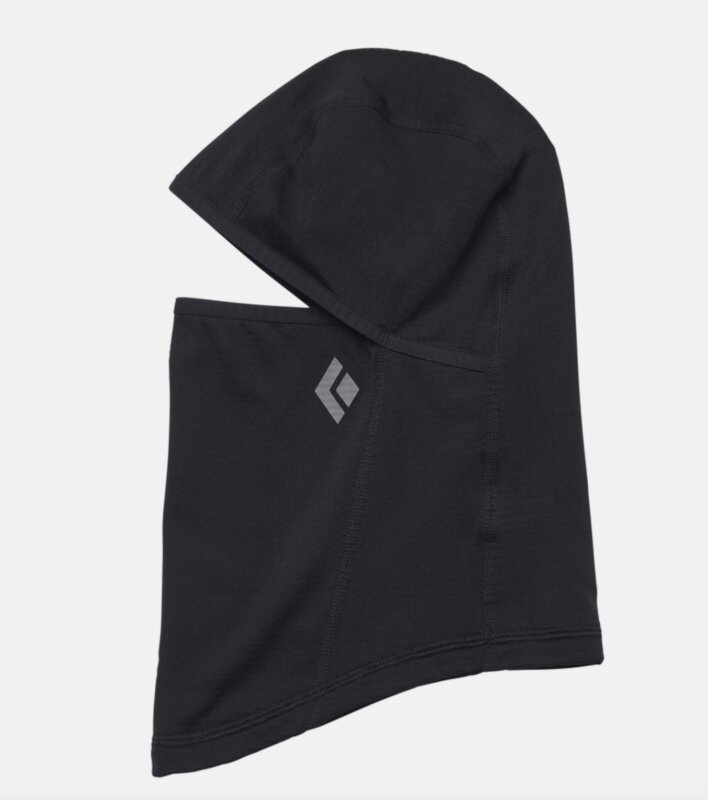 Balaclava
BalaclavaWe recommend a tight-fitting balaclava that is worn under your hat. Make sure that it covers as much skin as possible, but is comfortable enough to wear for hours.
Recommended: Black Diamond Coefficient LT Balaclava
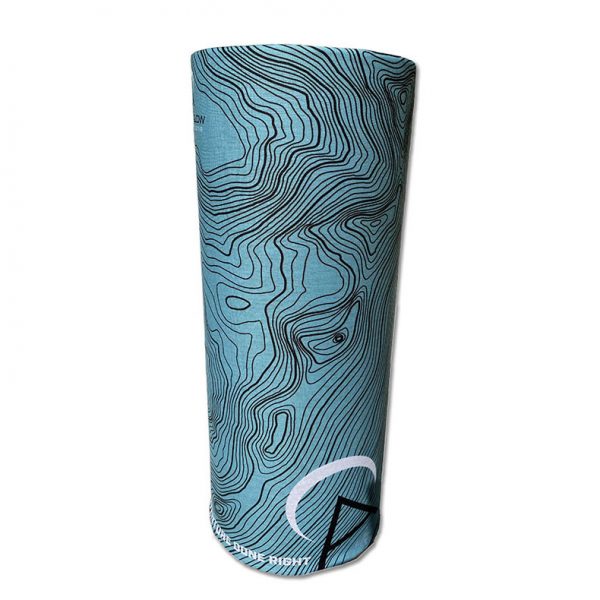 Neck Gaiter (Buff)
Neck Gaiter (Buff)A multi-purpose neck gator that can also be worn under your hat. Make sure that it covers as much skin as possible and yet is still comfy.
Recommended: Alpenglow Buff
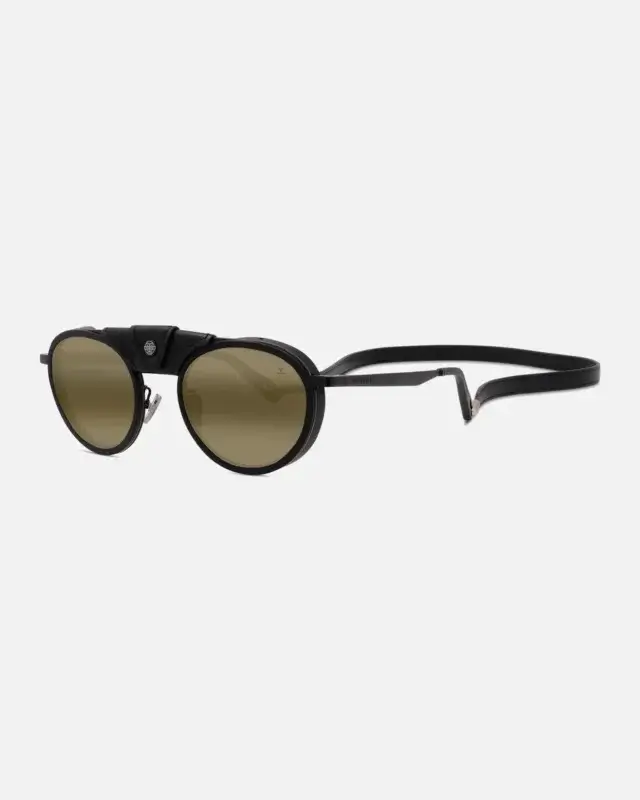 Sunglasses
SunglassesMust have dark lenses. Minimal light should come in below, above, or around the sides of the lenses.“Wrap” style is best. Ventilation is important and a retainer strap is very useful (Chums or Croakies).
Recommended: Vuarnet Glacier 01
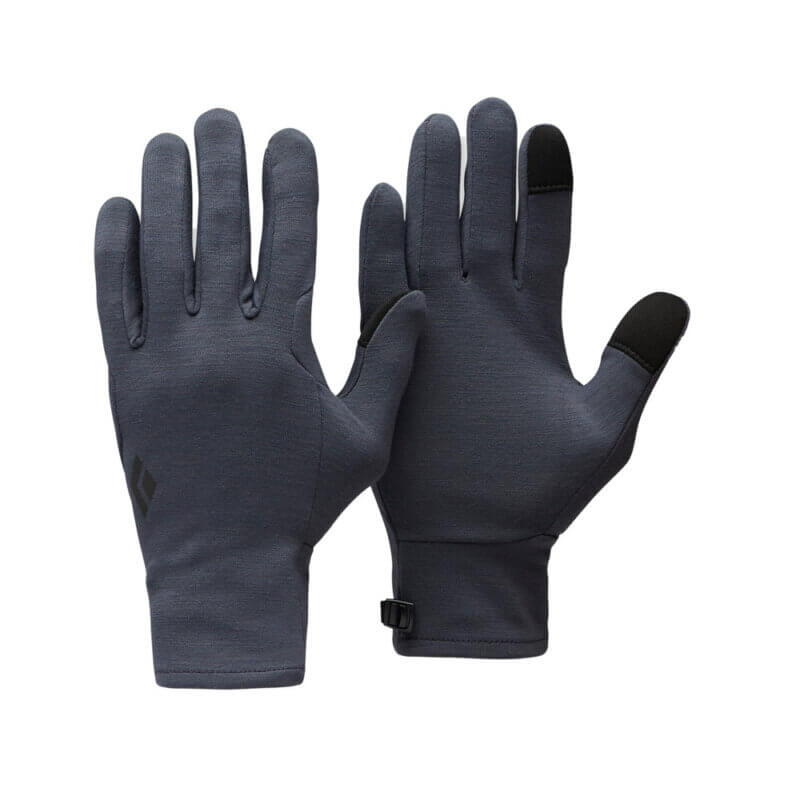 Liner Gloves
Liner GlovesThese gloves keep the inside of your mitts or other gloves from accumulating sweat on the inside and turning inside out when you take them off, as well as provide additional insulation.
Recommended: Black Diamond Midweight Wool Liners
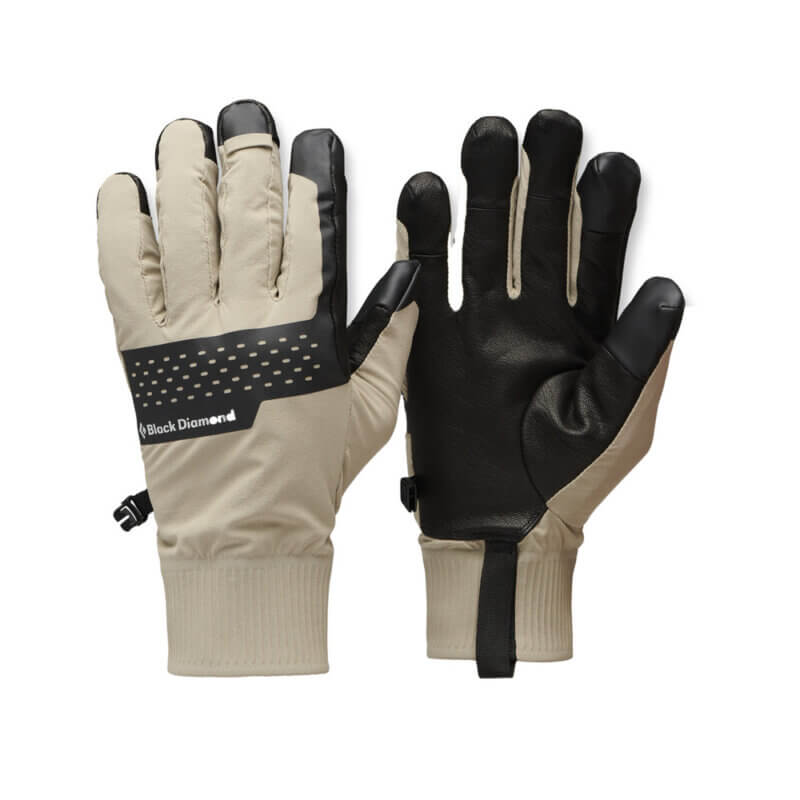 Lightweight Gloves
Lightweight GlovesAll-around gloves for mountaineering, backcountry skiing, and hiking. These gloves (and similar options) are warm, wind-resistant, durable and have a sure grip. You will rarely take these gloves off. They should be snug-fitting, and have some sort of reinforced palm.
Recommended: Black Diamond Alpine Softshell Gloves
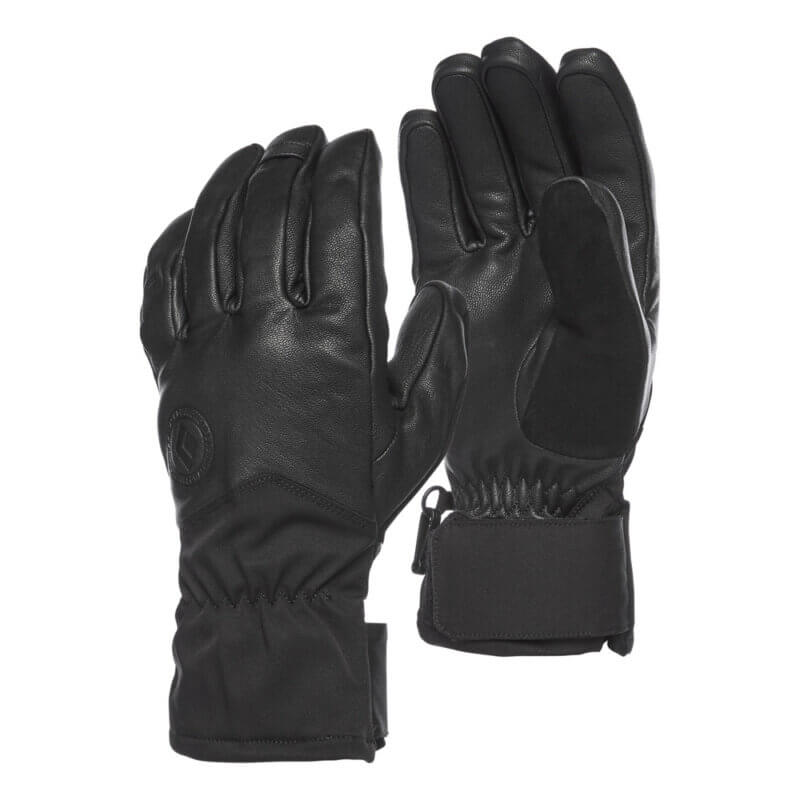 Midweight Gloves
Midweight GlovesThese gloves should be full GORE-TEX®, and insulated. These will be the workhorse glove for any expedition.
Recommend: Black Diamond Tour Gloves
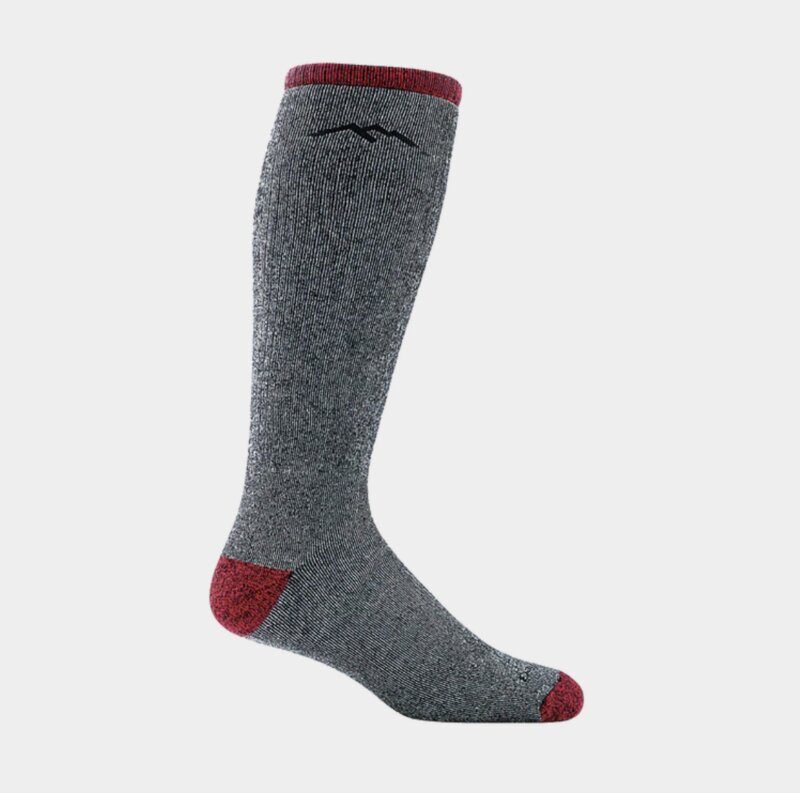 Warm Socks
Warm SocksA wool synthetic blend. Pure rag wool socks are not nearly as effective in wicking moisture or retaining their shape and reducing blisters. Bring a few pairs of these socks. NO COTTON.
Recommended: Darn Tough Mountaineering Sock
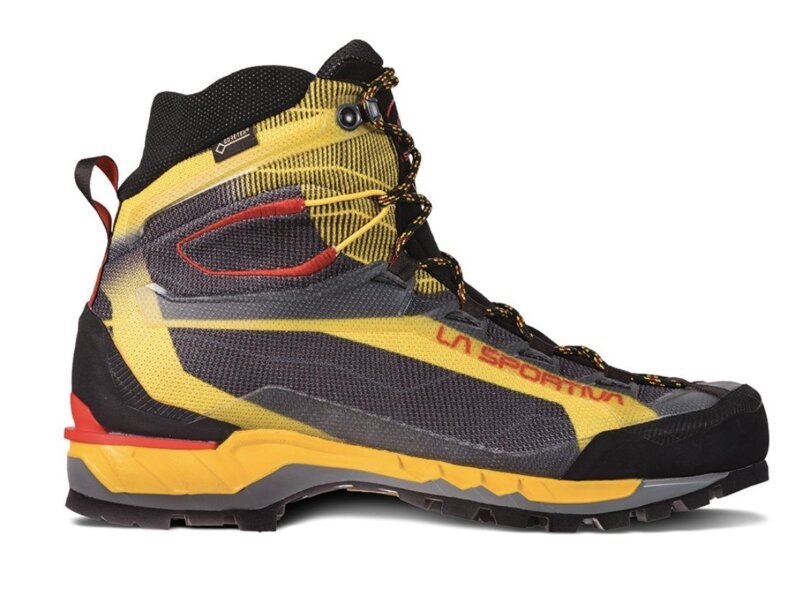 General Mountaineering Boot
General Mountaineering BootShould be warm single boots that have a stiff sole and accept a step-in crampon. The boots should be comfortable, have adequate wiggle room for your toes, and your heel should not lift more than 1/8 of an inch when walking.
Recommended: La Sportiva Trango Tech GTX
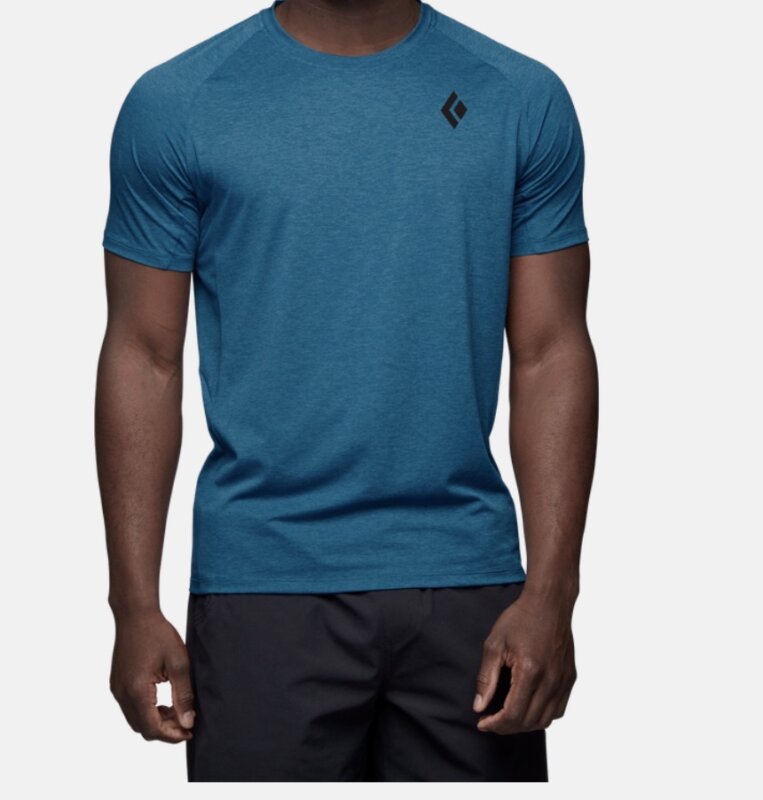 Lightweight Top
Lightweight TopUltra-light base layer that effectively wicks moisture away from your body and is breathable. Quick-dry is important as well. One light-colored shirt is recommended for extremely sunny days.
Recommended Men’s: Black Diamond Lightwire Short Sleeve
Recommended Women’s: Black Diamond Lightwire Short Sleeve
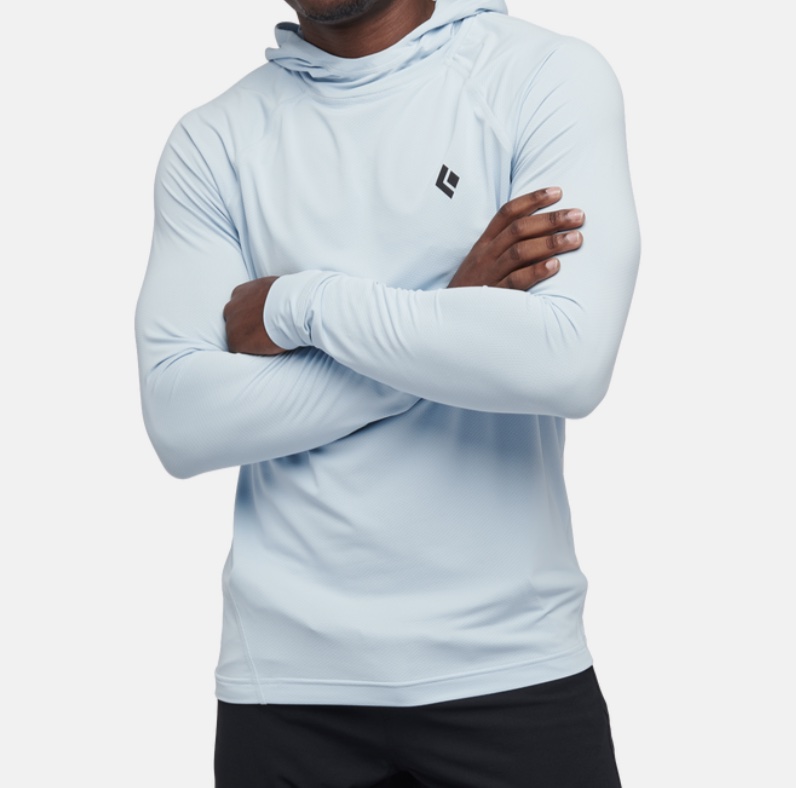 Sun Hoodie
Sun HoodieLightweight, long-sleeve sun hoody that is great for protecting from the sun.
Recommended Men’s: Black Diamond Alpenglow Hoody
Recommended Women’s: Black Diamond Alpenglow Hoody
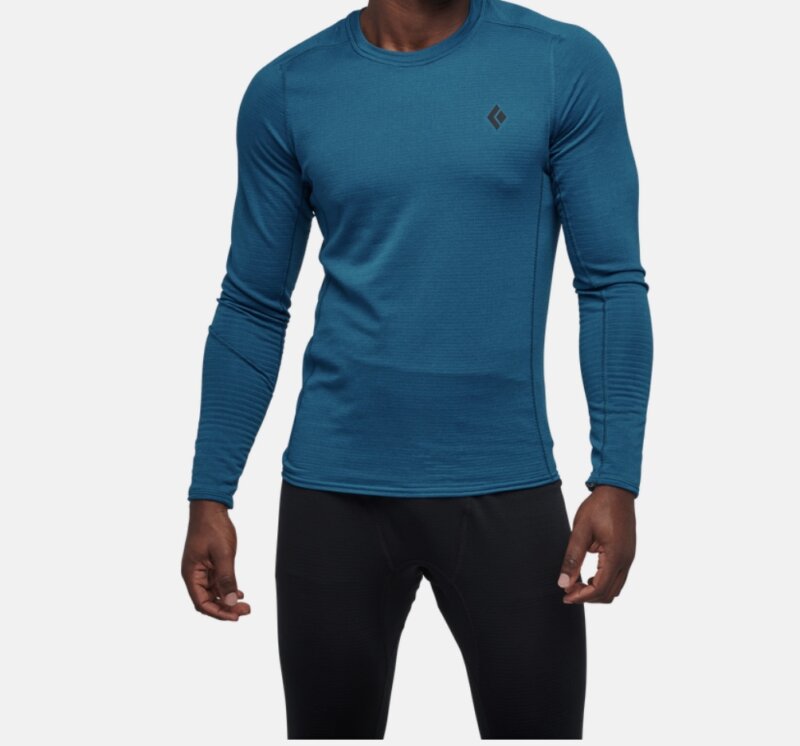 Lightweight Baselayer Top
Lightweight Baselayer TopA long sleeve base layer that is fitted, lightweight and quick drying. Make sure it is long enough to tuck in.
Recommended Men’s: Black Diamond Men’s Solution 150 Merino Crew
Recommended Women’s: Black Diamond Women’s Solution 150 Merino Crew
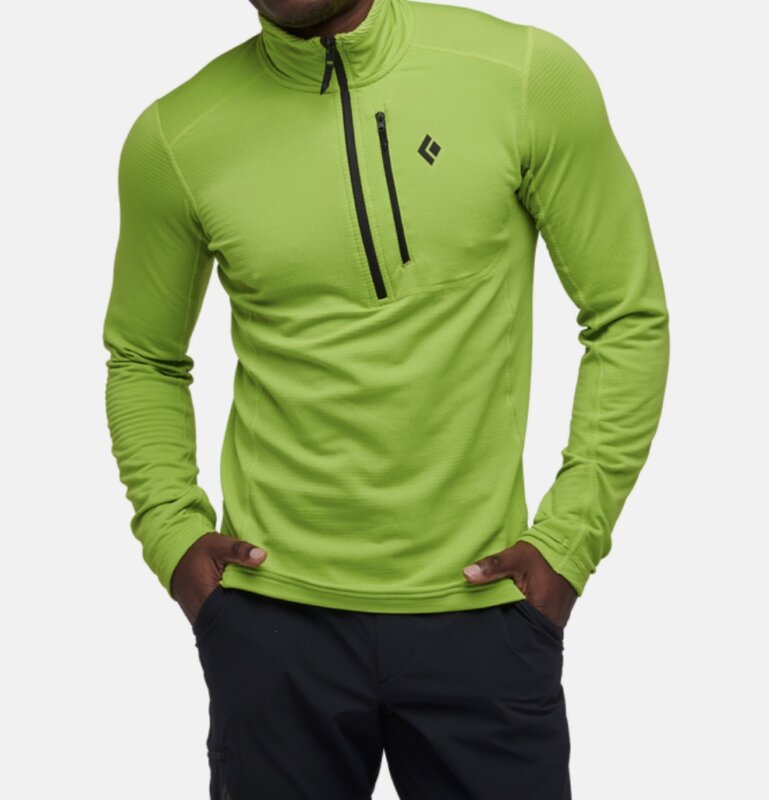 Mid-Weight Warm Layer Top
Mid-Weight Warm Layer TopThis mid-layer will be worn over your base layer most of the trip.
Recommended Men’s: Black Diamond Men’s Coefficient LT Quarter Zip Pullover
Recommended Women’s: Black Diamond Women’s Coefficient LT Quarter Zip Pullover
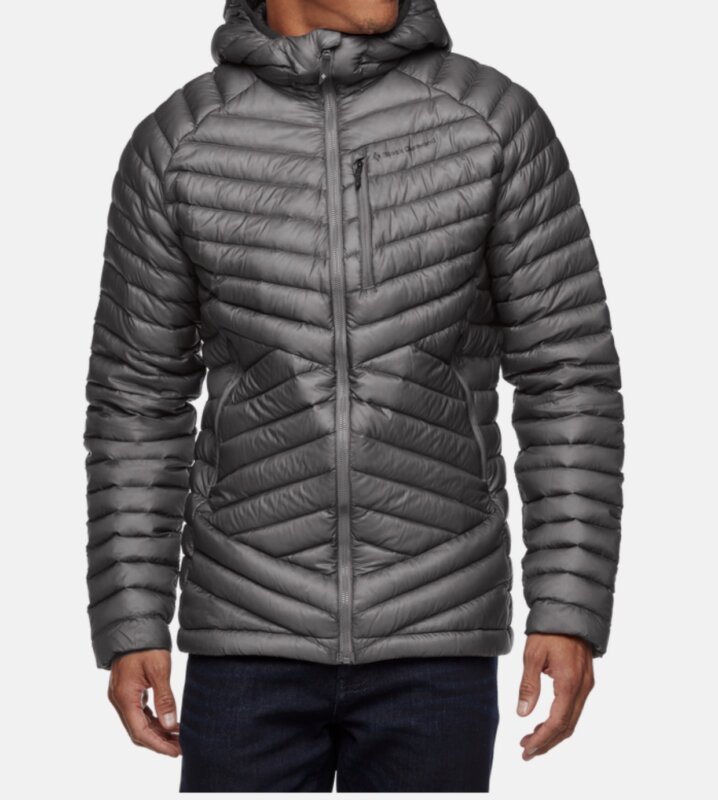 Mid-Weight Puffy Jacket
Mid-Weight Puffy JacketA simple, lightweight puffy jacket. This item is good for layering systems and staying warm. We recommend 800-fill down that is packable and resists inclement weather.
Recommended Men’s: Black Diamond Approach Down Hoody
Recommended Women’s: Black Diamond Approach Down Hoody
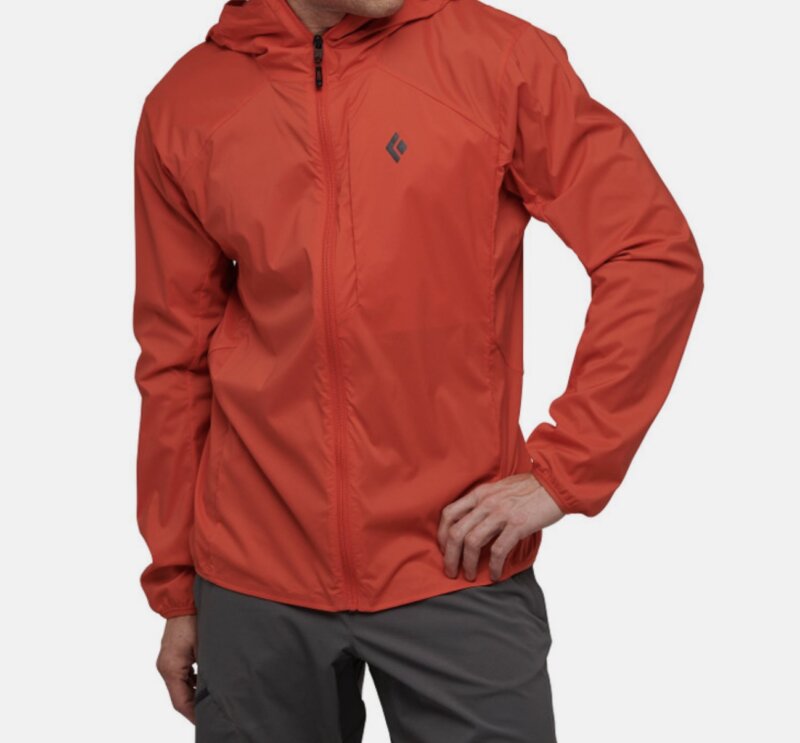 Soft Shell Jacket
Soft Shell JacketMore breathable than Gore-tex, these soft shell jackets block wind and light precipitation and are great as an outer layer and warm layer under your parka.
Men’s Recommended: Black Diamond Alpine Start Hoody
Women’s Recommended: Black Diamond Alpine Start Hoody
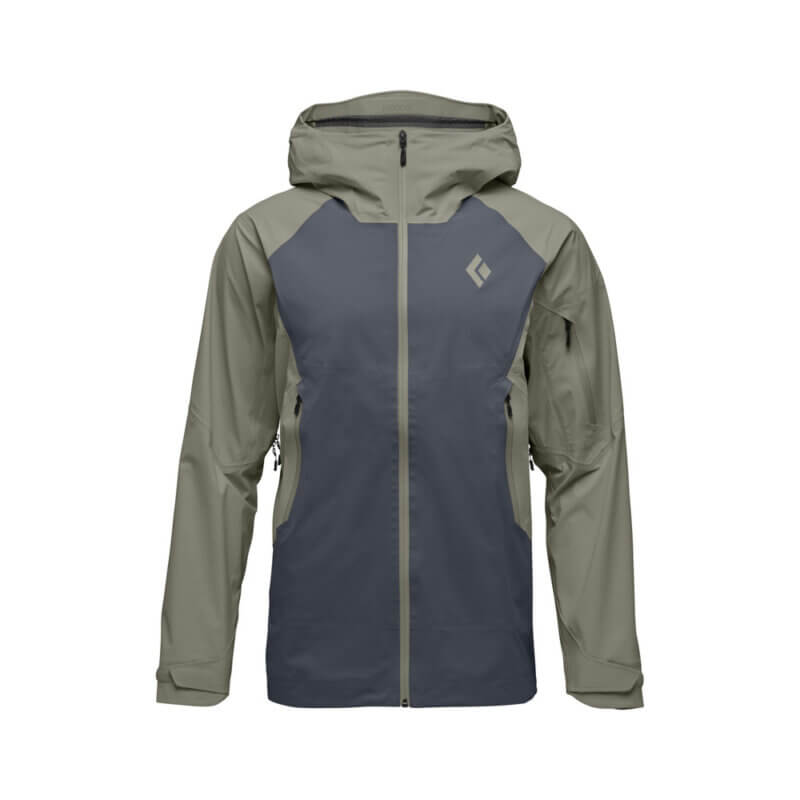 Hard Shell Jacket
Hard Shell JacketA lightweight, waterproof and breathable jacket WITH A HOOD that can withstand extreme weather conditions. Make sure you have pit-zips and if you are using an old jacket, re-waterproof it.
Recommended Men’s: Black Diamond Recon LT Stretch Shell
Recommended Women’s: Black Diamond Women’s Recon LT Stretch Shell
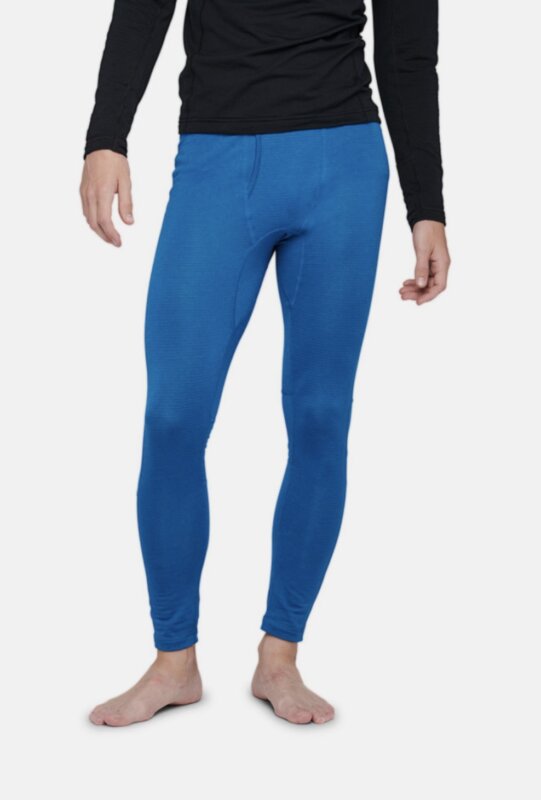 Lightweight Baselayer Bottoms
Lightweight Baselayer BottomsFitted and quick drying. This piece will be a base-layer that will get you through a wide range of temperatures. This can be 3/4 length bottoms if preferred.
Recommended Men’s: Black Diamond Solution 150 Merino Baselayer
Recommended Women’s: Black Diamond Solution 150 Merino Baselayer
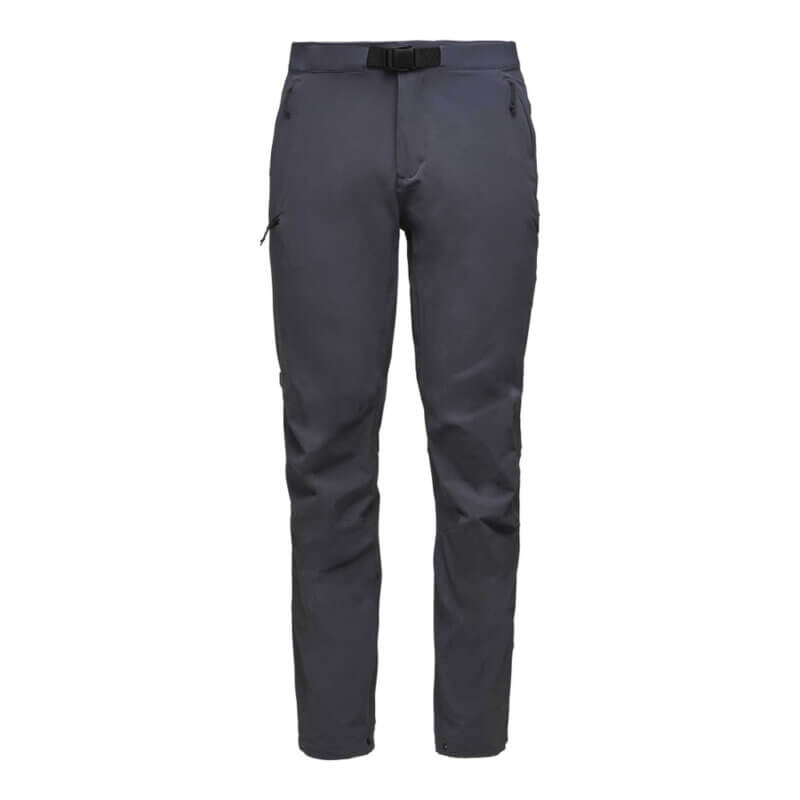 Soft-Shell Alpine Pant
Soft-Shell Alpine PantYou will spend most of your days in these pants. They should be breathable + water-resistant.
Recommended Men’s: Black Diamond Men’s Alpine Pants
Recommended Women’s: Black Diamond Women’s Alpine Pants
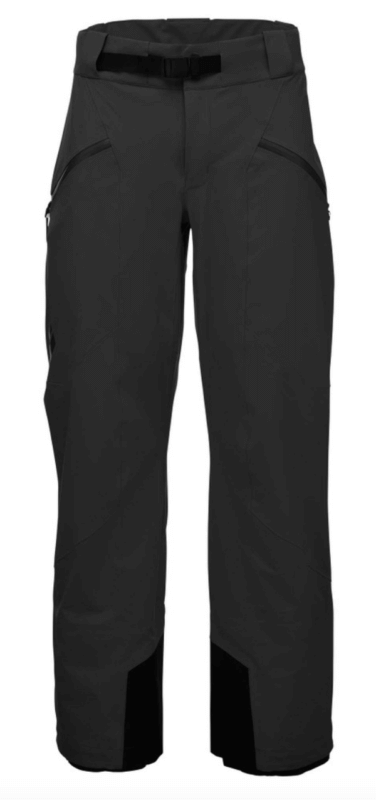 Hard Shell Climbing Pant
Hard Shell Climbing PantYour waterproof bottom layer for extreme weather days. Make sure you have water-resistant zippers, crampon patches + good pockets.
Recommended Men’s: Black Diamond Men’s Fineline Stretch Full Zip Pants
Recommended Women’s: Black Diamond Fineline Stretch Full Zip Pants
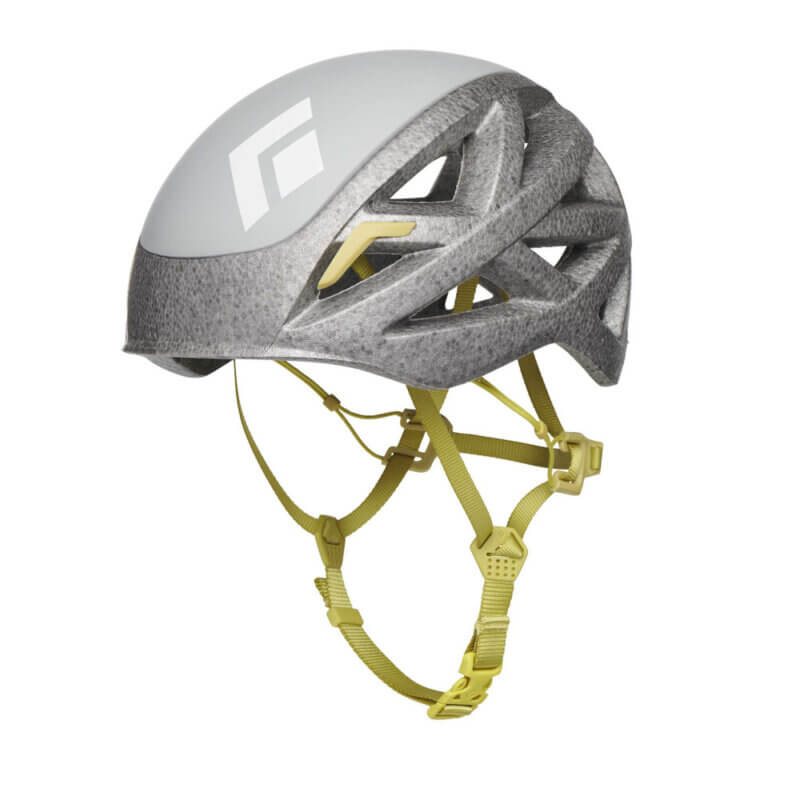 Helmet
HelmetAn easily adjustable lightweight helmet that fits with hat and Balaclava. Make sure this is a climbing-specific helmet. *Climbing helmets are also available to rent (for our introductory climbing courses) at no charge from Alpenglow Expeditions on a first-come, first-serve basis.
Recommended: Black Diamond Vapor Helmet
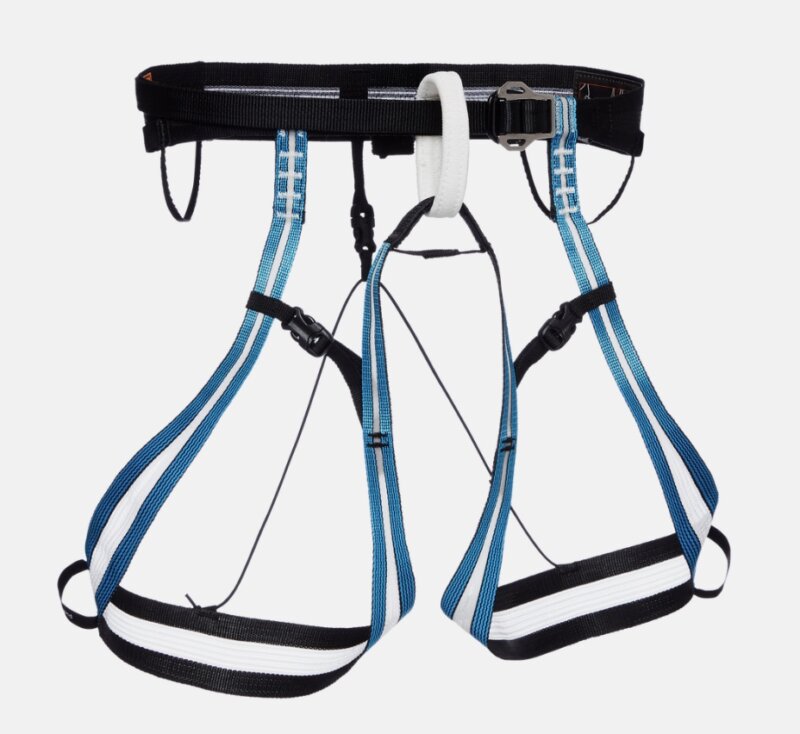 Mountaineering Harness
Mountaineering HarnessMust have belay loop, gear loops and adjustable leg loops so that you can layer up underneath it. Easy to pack, lightweight + comfortable. *Harnesses are also available to rent (for our introductory climbing courses) at no charge from Alpenglow expeditions on a first-come, first-serve basis.
Recommended: Black Diamond Couloir
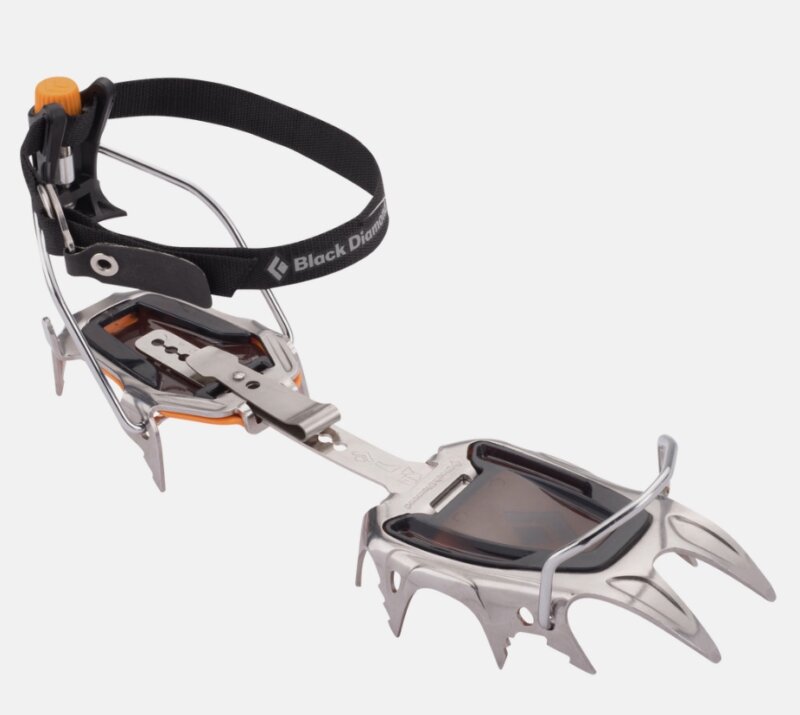 Mountaineering Crampons
Mountaineering CramponsSteel crampons with anti-balling plates are required (so that snow does not build-up in the base of your foot). Make sure that crampons have a heel bail and that they fit snugly on your ski or snowboard boots. Crampons are available to rent (for our introductory climbing courses) at no charge from Alpenglow Expeditions on a first-come, first-serve basis.
Recommended: Black Diamond Sabretooth Crampons
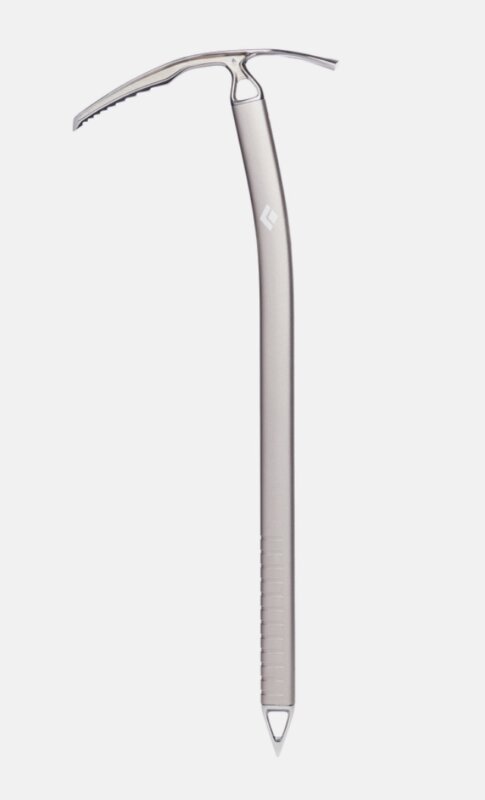 General Mountaineering Axe
General Mountaineering AxeOne non-technical climbing axe. The tool should be approx. 55cm- 65cm long and comfortable to hold. *Ice axes are also available to rent (for our introductory climbing courses) at no charge from Alpenglow expeditions on a first-come, first-serve basis.
Recommended: Black Diamond Raven Pro Ice Axe
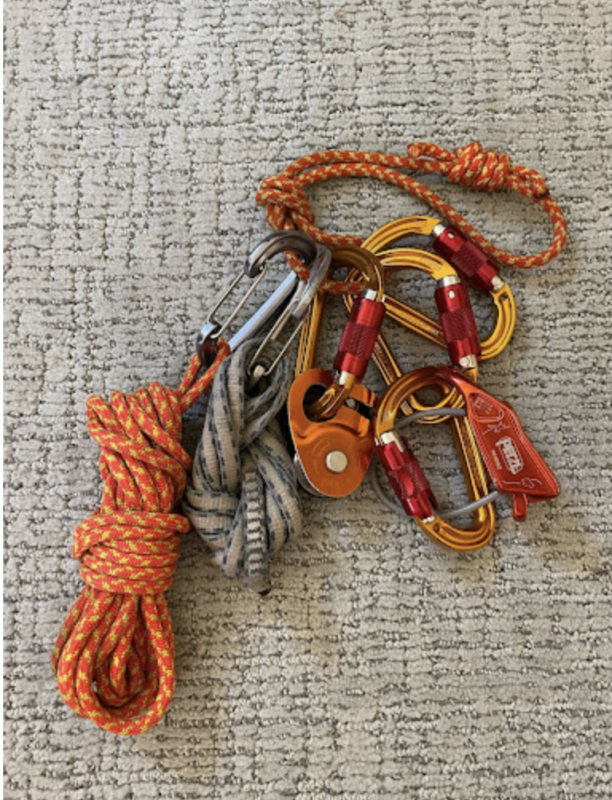 Technical Kit
Technical KitWhile the technical equipment needed for a specific objective and season varies, this basic kit is a great baseline. Your guide will bring gear for you to use during your course, but participants are encouraged to bring some or all of this if you own it or are interested in purchasing it.
1 Cordalette (6mm x 5m/16.4′)
4 locking carabiners
2 non-locking carabiners
1 double-length Dyneema sling
Small prusik loop (6mm x 112cm/44″)
Auto-blocking belay device (eg. ATC guide)
Micro Traxion or similar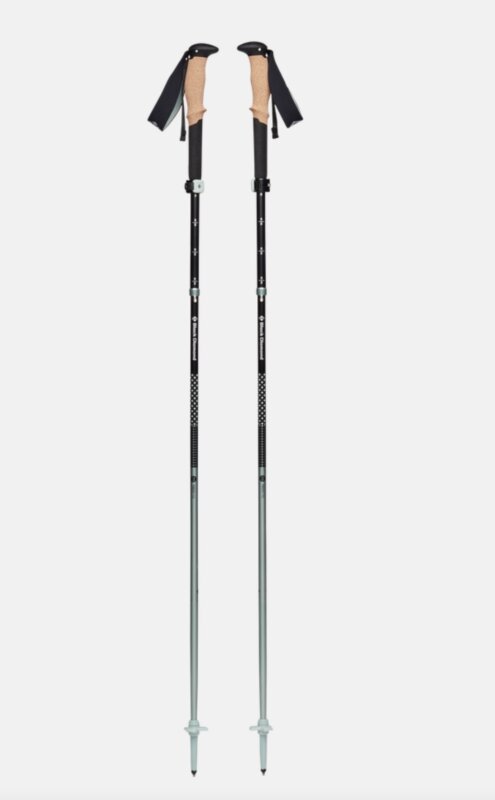 Trekking Poles
Trekking PolesMake sure that they are durable, lightweight + easily adjustable. These are optional, but highly recommended.
Recommended: Black Diamond Pursuit FLZ Trekking Poles
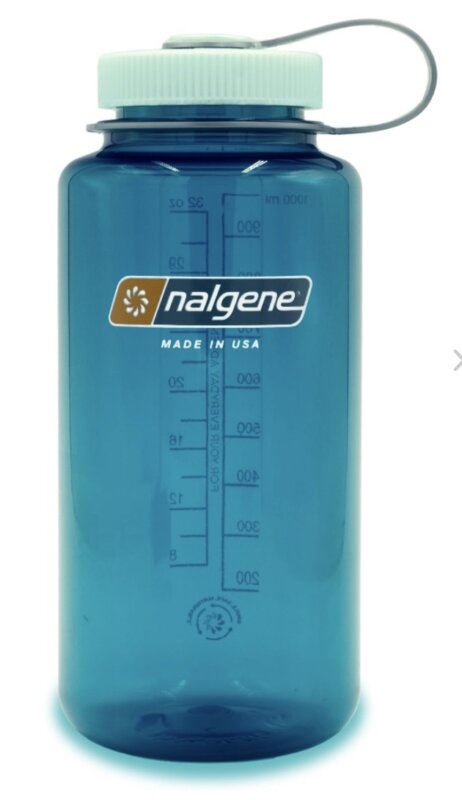 Two 1L Nalgene Bottles
Two 1L Nalgene BottlesTwo 1 Liter Wide Mouth Nalgene bottles.
Recommended: Nalgene 1 L wide mouth
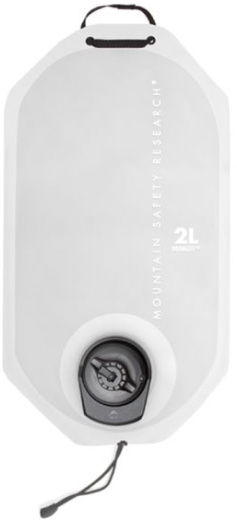 Hydration System
Hydration SystemShould carry 70-100 ounces. Must be durable and have a reliable closure system. Recommended: MSR Dromlite 2L with Hydration Tube
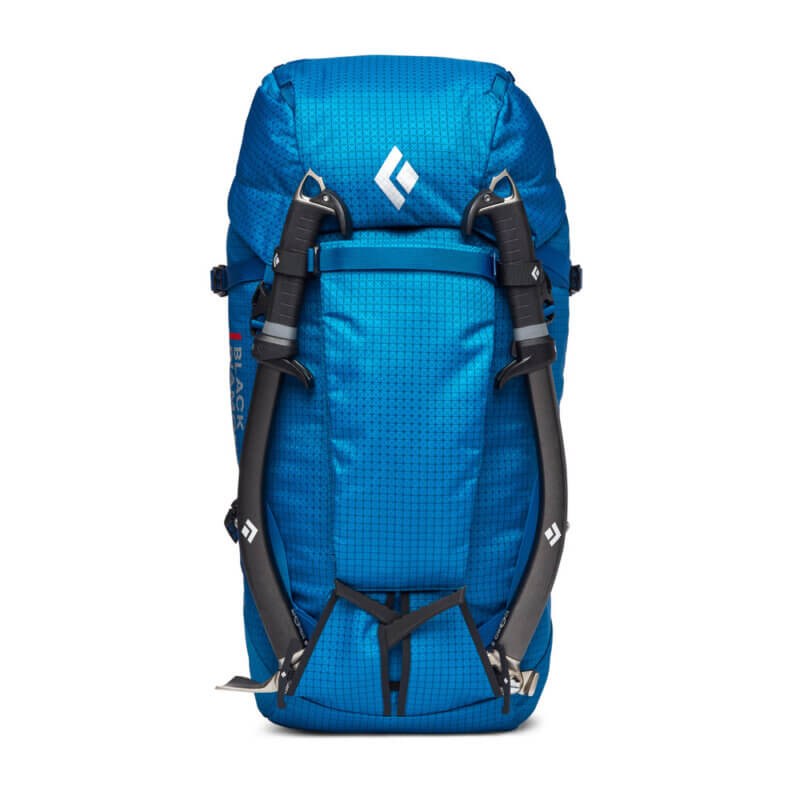 Climbing Pack: 50-60L
Climbing Pack: 50-60LInternal frame pack that is between 50 and 60 liters. Either purchase a matching pack cover, or use garbage bags as liners. Make sure the pack is fitted to YOUR body.
Recommended: Black Diamond Mission 55L Pack
Alpenglow is the best
“I’ve been climbing with Alpenglow for over ten years. After my first expedition, I knew I’d found the best team. I feel like I’m a member of the Alpenglow family, and have come to know and love many of their guides, office staff, and programs. Alpenglow is truly the best!”
Evan M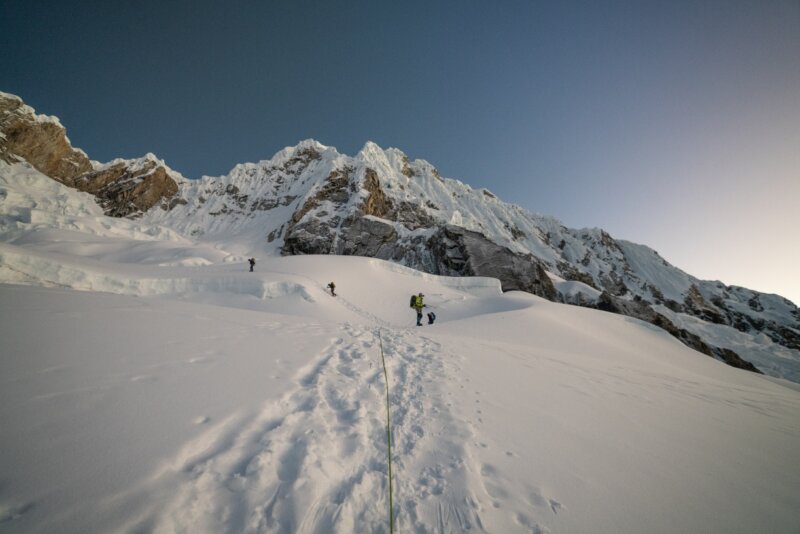
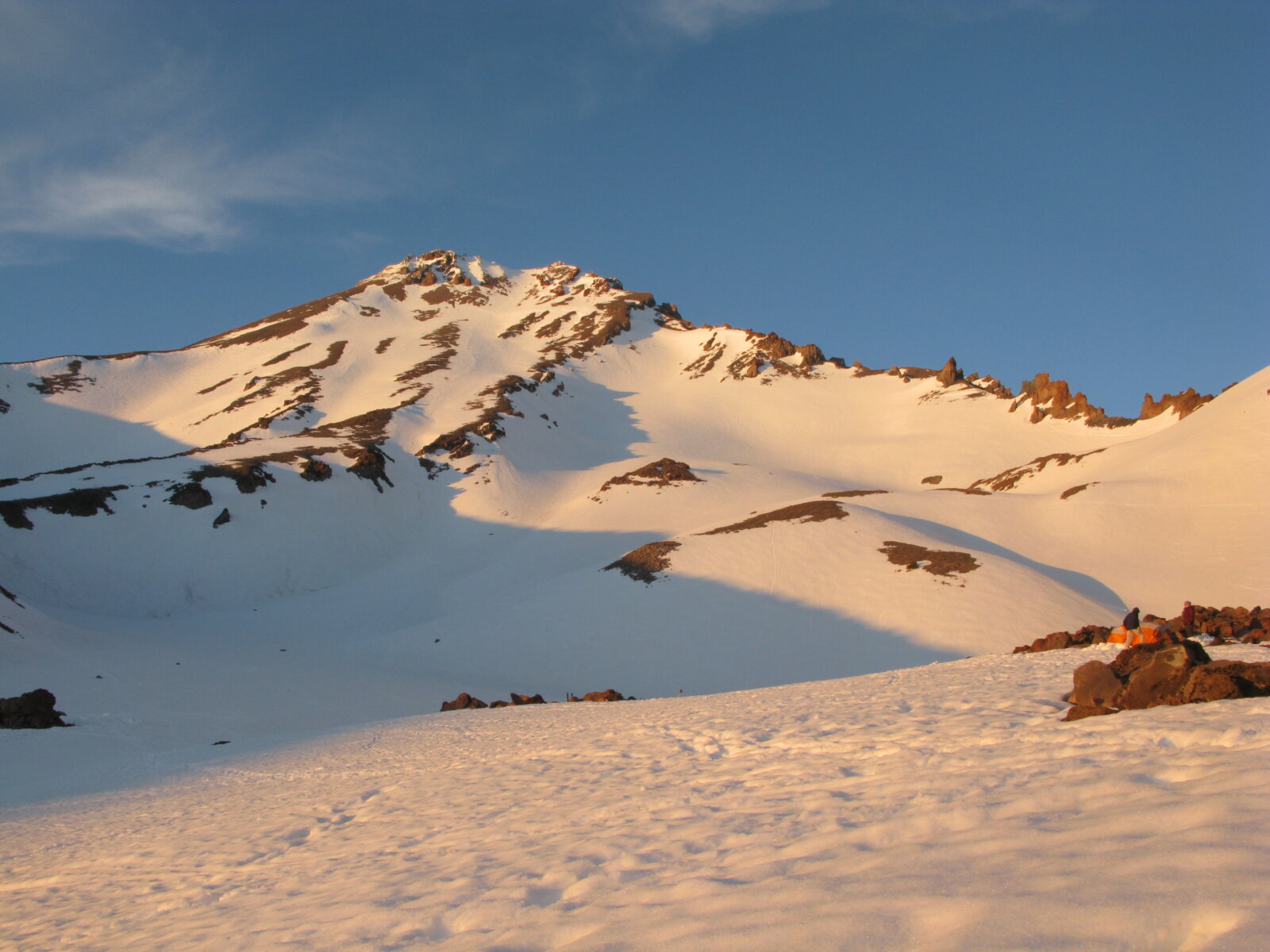
Mount Shasta Mountaineering School
June 11 – 15, 2026 5 Days Mt. Shasta, CA
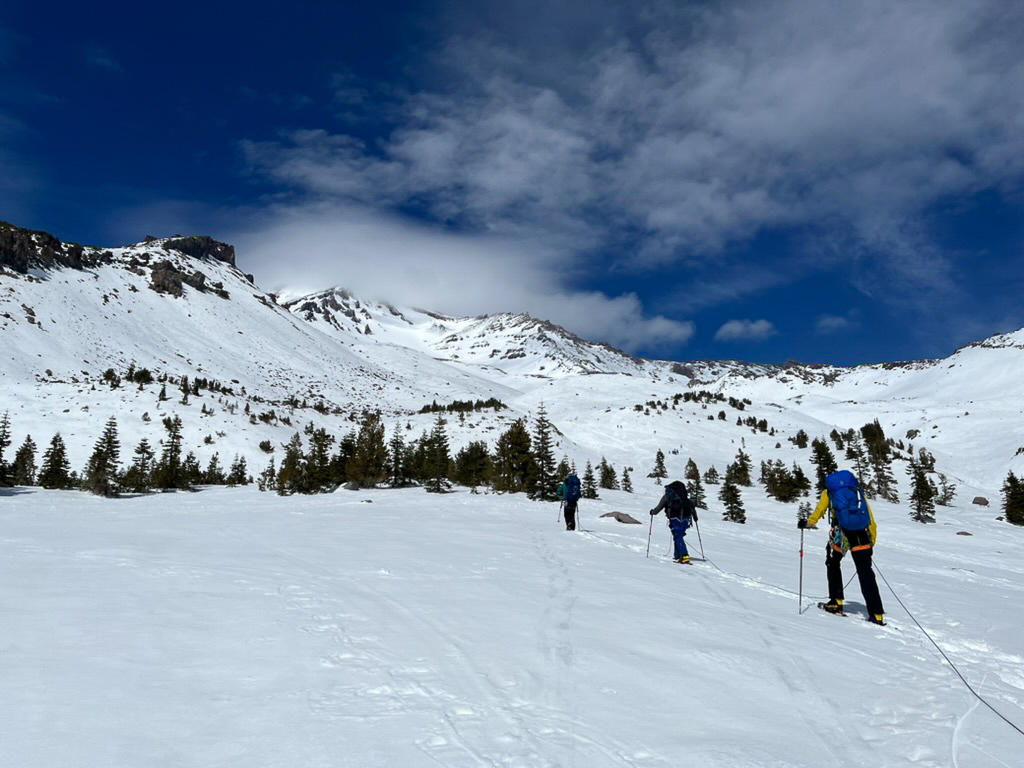
Mount Shasta Avalanche Gulch Climb
May 2 – 3, 2026 2 days Mount Shasta, CA
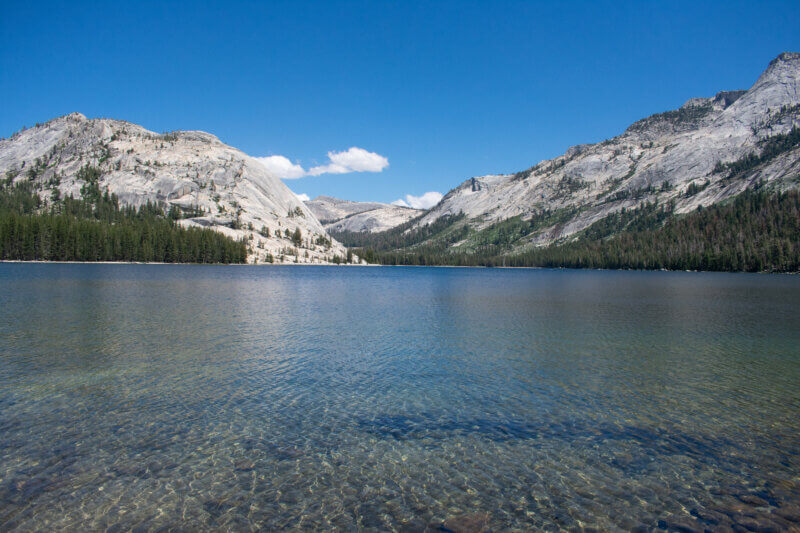
Backpacking the Grand Canyon of the Tuolumne: Yosemite’s Wildest Side
While the crowds gather at Glacier Point and Yosemite Falls, we’re dropping into something much deeper—literally and figuratively. The Grand Canyon of the Tuolumne doesn’t get the hype it deserves, and we’re okay with that. It keeps things quieter out there.Read the story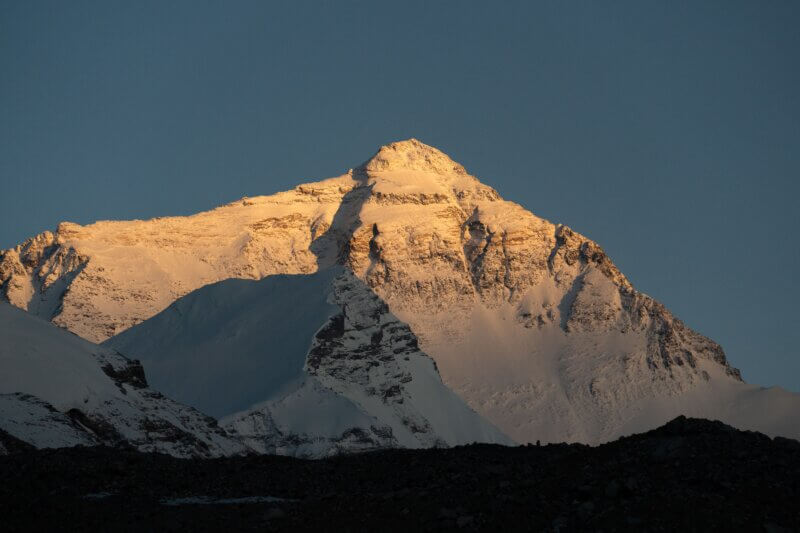
Everest North Side 2025: A Season of Patience, Precision, and Perfect Timing
This spring, our Alpenglow Expeditions team returned to the North Side of Mount Everest with a small crew and a big plan. After months of preparation, pre-acclimatization, and weather watching, our Everest expedition 2025 culminated in an incredibly rare summit day—blue skies, no wind, and a quiet mountain.Read the story
